NOSTALGIC MEMORIES OF-
OTHER EAST AFRICAN CITIES & TOWNS ---------
ARUSHA
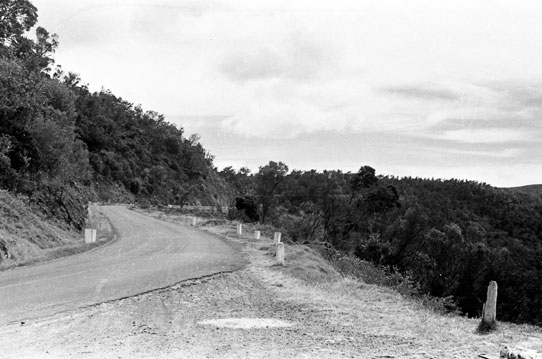
A view of the road from Nairobi to Arusha -Tanzania
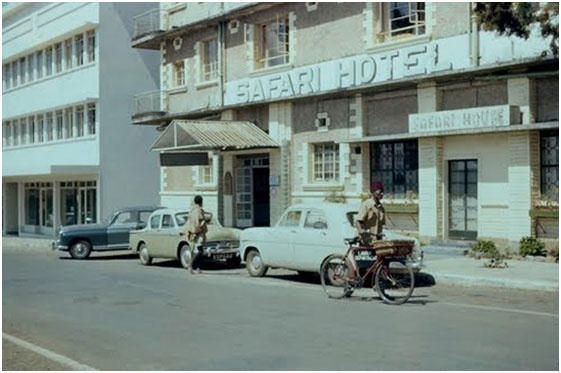
Safari Hotel, Arusha. Photo taken circa 1958
The 8-roomed Safari Hotel was built in 1935 for Gladys and Margot Rydon, two English sisters owning coffee estates in Tanganyika. After the unification of Tanganyika and Zanzibar into modern-day Tanzania in 1964 and the Arusha Declaration in 1967, the Safari Hotel was nationalised, as were many banks and large industries at that time, and handed to the national housing Cooperation. The Hotel was subsequently sold to theEvangelical Lutheran Church in Tanzania, who added the New to the name and set up the New Safari Hotel (1967) LTD. See below
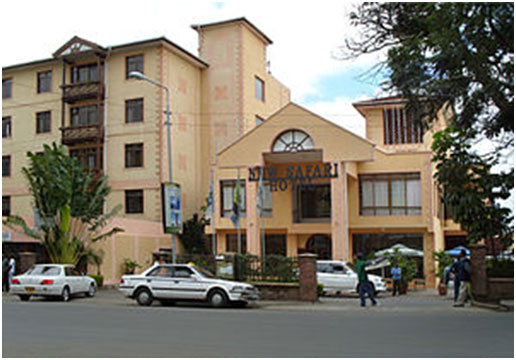
Above photo shows the same but face-lifted 46-bedroom New Safari Hotel as it stands today. Famous guests at this hotel were actors and hunters Robert Taylor, John Wayne and Hardy Krüger. (Contributed by Tahir Mirza)

The Beauty of Mount Kilimanjaro near Arusha/Moshi-Tanzania

A typical African tree near Arusha (1954)

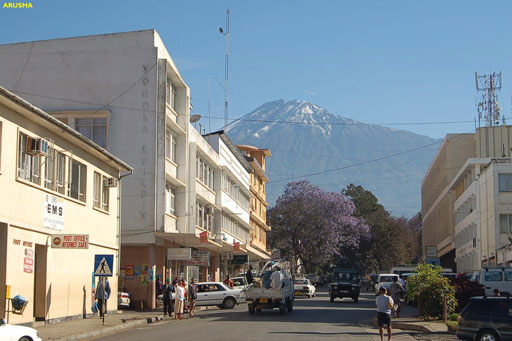
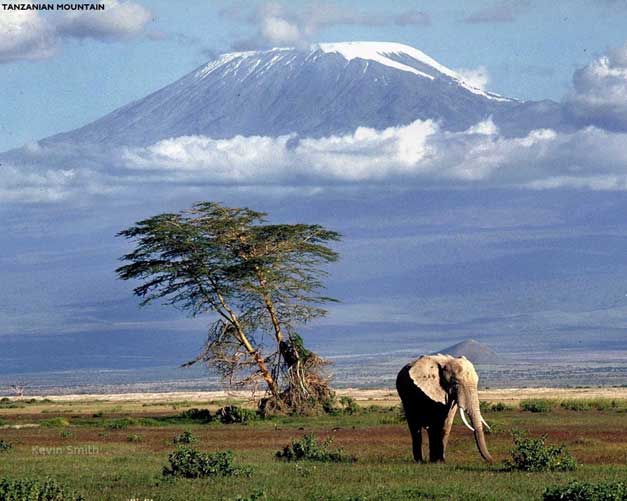
The Kilimanjaro from Arusha
BRODERICK FALLS
BRODERICK FALLS lies near the border of Kenya and Uganda near Turbo.
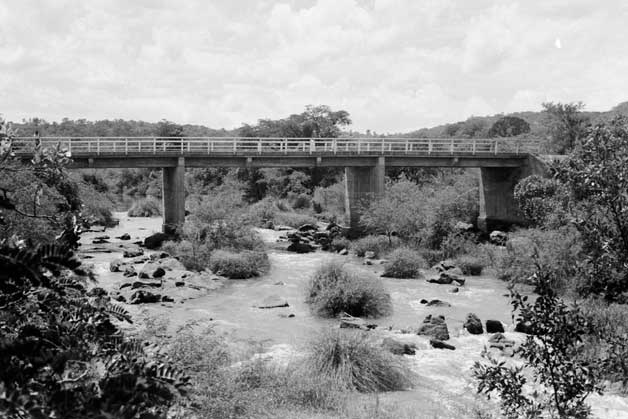
This is the main motorway bridge to be crossed to enter Uganda from Kenya 1960 (sent by Rajni Shah)
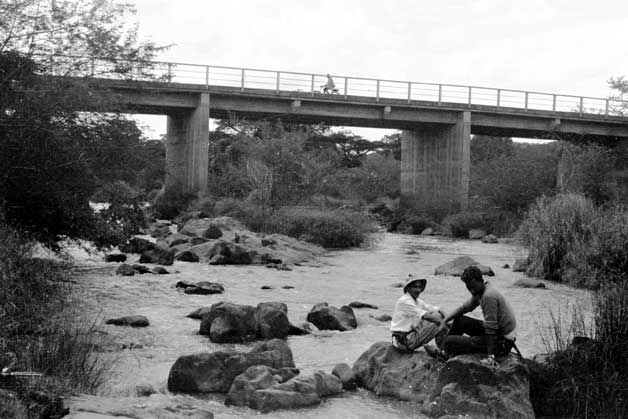
Rajni who sent these historic photos is seen with a friend enjoying the Broderick river waters 1960
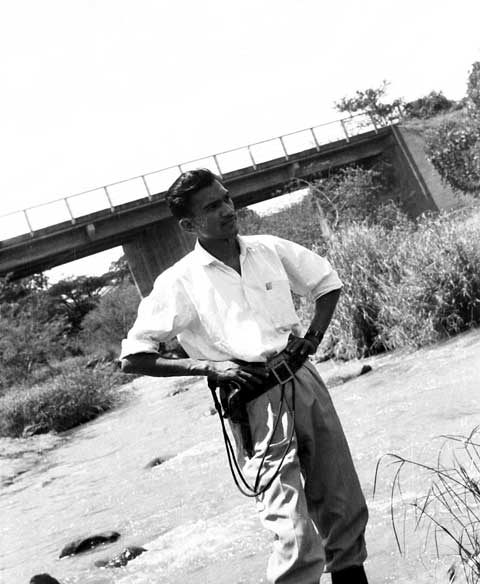
Rajni Shah with his trusty gun near the Broderick Bridge 1960
DAR-ES-SALAAM
Dar es Salaam (Haven of Peace in Arabic) was founded in 1862 by Sultan Seyyid Majid of Zanzibar on the site of the village of Mzizima. Mzizima's history dates back to the time when the Barawa people started to settle and cultivate the area around Mbwa Maji, Magogoni, Mjimwema, Gezaulole and Kibonde Maji Mbagara.
Present day Dar es Salaam's origins have been influenced by myriad of Sultans, the Germans and the British. The city started as a fishing village in the mid 19th century, is now Tanzania's largest city, and has become one of East Africa’s most important ports and trading centers.
With its great atmosphere, mix of African, Muslim, and South Asian influences, picturesque harbour, beaches, chaotic markets, and historical buildings, it is well worth extending your stay beyond the time between flights.
Dar es Salaam is Tanzania's financial and political hub despite having lost its status as official capital to Dodoma in 1973.
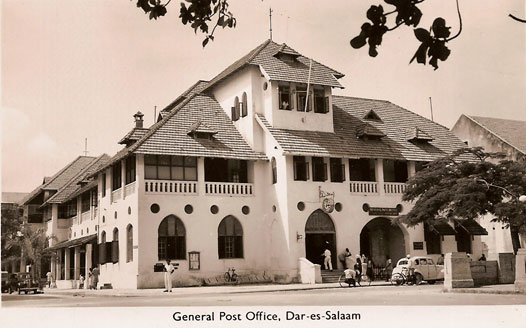
( photo courtesy Rama Dunn)
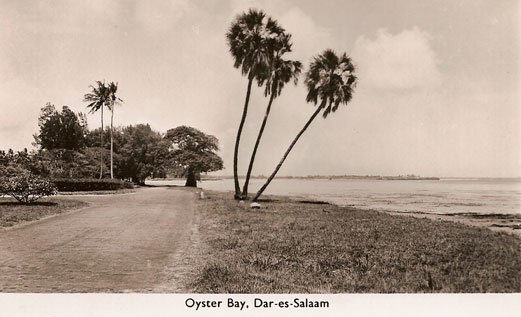
( photo courtesy Rama Dunn)
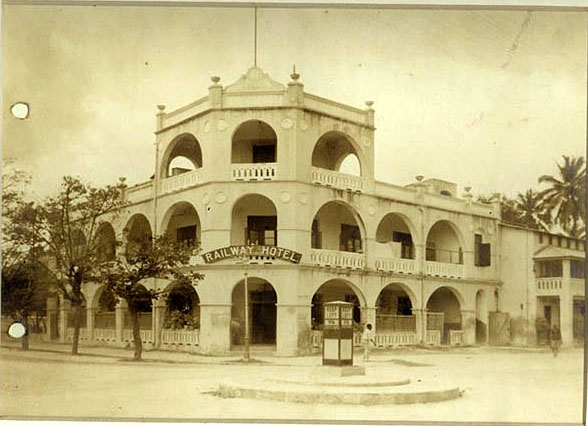
Railway Hotel
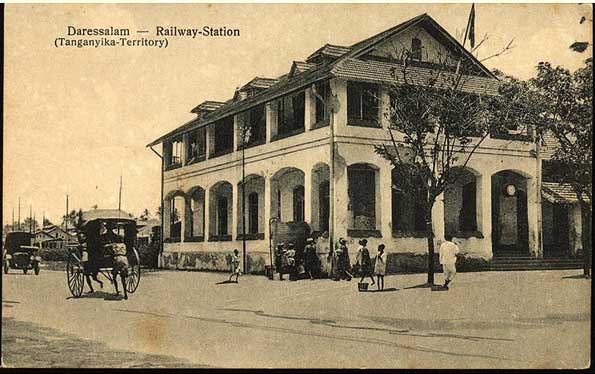
Dar Railway Station
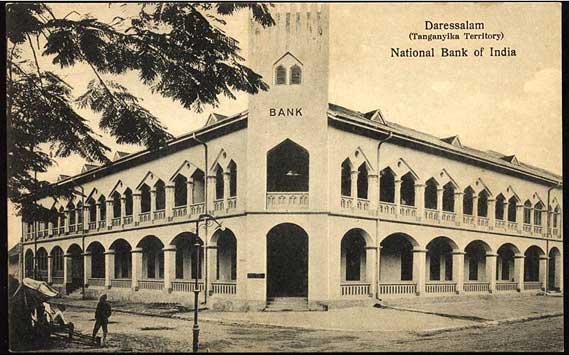
National Bank
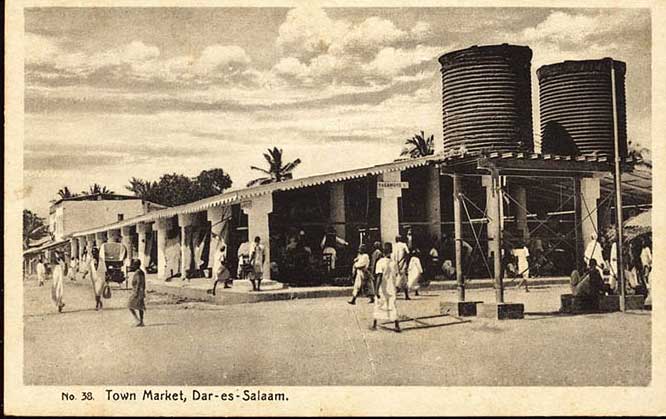
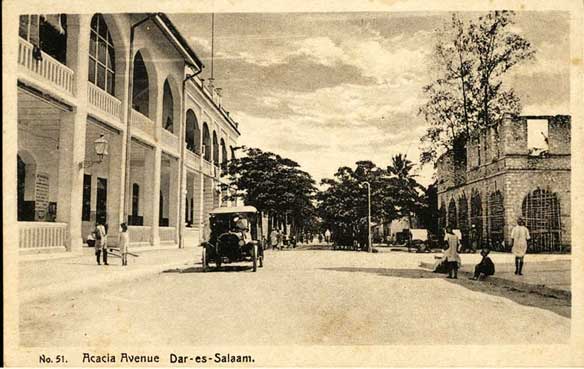
Acacia Avenue DSM
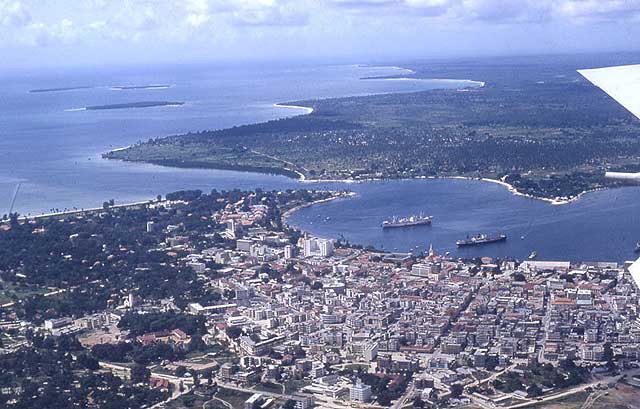
Dar-es-salaam from the air 1967 (sent by Ron Bullock)
The following article about modern Dar-es-Salaam has been sent by courtesy of Karam Bharij
BULLETIN #1 FROM DAR – DECEMBER 2010
On December 9, 2010 Tanzania celebrated 49 years of independence with considerable accolades in the local press about the country’s achievements.
However, the press acknowledged poverty still remains an insurmountable issue among this country of 45 million people.
Dar es Salaam is bursting at the seams with conservative estimates putting its population at about 14 million – a third of the national population.
The effect is felt in the capacity of the infrastructure – endless days of interrupted electricity and water rationing. Promises are being made daily by politicians this is a temporary phenomenon. The definition of temporary in Tanzania is different than anywhere else.
As the third largest producer of gold after Ghana and South Africa, Tanzania is enjoying the boom.
There is untapped uranium in the south and natural gas is being explored off the coast of Tanga. Geologists say it is the same shelf that stretches out of the Arabian Peninsula.
Tourism is being encouraged with the development of numerous resorts across the country.
The outlook for the country is promising if development can be managed well.
The government has an ambitious blueprint of developing Kingamboni – commonly referred to as Kivokoni by the Dar residents as efficient crossing to it is only by a ferry. The plan is to develop the area as ‘new Dar’ designed on the model of Dubai.
The World Bank is an ardent supporter of Tanzania with fiscal and governance accountability agreements being forced on the country for massive injection of loans and grants.
The stability of the country is a plus in the chaos of Africa.
Corruption is still rampant but innocuous as it operates at the highest level.
Many Africans are in business and drive nice cars and live in most modern homes in the suburbia Dar.
Despite the stifling heat, politicians visit the local villages in two piece suites and ties. Gone are the Kaunda style outfits or kitenge shirts. A walk around government offices surprised me to see that even the lowly paid clerks were in suites and ties.
Dar’s skyline is changing. New buildings crop up. These are commercial and residential dwellings which command exorbitant prices. A three bed apartment can command prices of around $300,000 or rental of $1500+, an impressive rate of return. In my view, the bubble has to burst given the inherent economy. At least 800 new units will be in the market in the next year to saturate the supply.
When I landed at Dar airport, I had to complete two forms with exactly the same information. One was an application for a visitor’s visa and the other was a disembarkation card. Airlines are prohibited from issuing these forms on the aircraft resulting in delays in immigration clearance.
There were at least 6 officials working in an assembly line mode to process the forms – from validating the information, manually entering the details on the computer, receipting the US $50 visa fees to stamping the passport. The whole process appears to work and that is good enough for Tanzanians.
Only whites are deemed to be trustworthy with ‘nothing to declare’ at customs. Asians and Africans must undergo inspection – albeit cursory. From aircraft landing to exiting the airport building could take up to 60 minutes.
The heart of our community (Khoja Shia Ishna-asheri) is the magnificent mosque and the imambarghah. This is a place where you temporarily forget all the stresses of living. The ceiling fans are humming with zeal with the help of a diesel-fired industrial generator. The mosque has well-replenished underground water well that supplies it with ample amount of water. The faithful are thus able to do their wudhu (ritual ablution) unhindered.
The Ithna-asheri community comprises 8,000 persons, the largest followed by Toronto and London.
I happened to be here during the first 12 days of Muharram and thus every third Asian walking in Dar was clad in black. Ladies hurried between the three back-to-back majlises, two of which were being recited by the same Zakira (lady priest). The ladies confirmed the Zakira was a good orator who could whip up the emotions with graphic details about the events of over 1,400 years ago. I enquired some of the details and fear the embellishments were rather excessive and illogical.
The faithful were treated to 12 days of sumptuous lunches. A total of 20 ‘dhegs’ (large cooking vessels) were consumed every day. The benefactors compete for sponsorship for designated days. The menu is staple rice with daal or meat curry, goat pilau or kichro. The quality of service and logistics of the volunteers serving such a large Jamaat (congregation) is impeccable. Other communities have a lot to learn from these folks.
The lectures start and end on time and the punctuality put jamaats (communities) in the West to shame. A khoja reciter from Karachi, Shaykh Mohamdraza Dawoodani tried to blend Islamic philosophy of the ABCs – Actions, Beliefs and Character into modern living. Through an unscientific poll later I found out the audience was not impressed with him. Among the comments were that he repeated himself excessively and could have delivered his ‘masaib’ (speech) to about 20 minutes. Without adequate weeping, it did not feel like Muharram for these folks.
Our Kabrastan (graveyard) is another venue for social gathering. Donated by the Sachoo family, this parcel of land is filled up save for a designated area for the descendants of that visionary benefactor. After a waiting period of 10 years, relatives can now be interred into the same grave.
Regrettably it is not a well-planned graveyard and manovering between graves can be dangerous for the aged and infirm. Neither is there a listing or locations of graves as it exists at Mombasa or Arusha graveyards. The bookish lectures at the Kabrastan is followed by an extremely sweet Chai and a paper bag of assortment of tabbaruk (food that is therefore blessed).
Next – Living challenges of Dar.
In a word, Dar is gradually becoming an expensive city relative to the level of income of its population. According to latest government statistics annual inflation at October 2010 was 12.1%. Many new increases are in the pipeline. Electricity rates went up by 19% on January 1, 2011. Cooking gas filled in canisters will go up by 9% in January.
Typical office salaries for non-professionals range between $600 and $800 per month and salary increases have been very modest, no where near the rate of inflation. House helpers (i.e. domestic servants) make roughly US$70 per month. Excluding housing costs, a couple needs anywhere between US$800 to US$1,000 per month to survive in the City centre.
Housing in this crowded city fall into three categories:
government-owned apartment units that were confiscated from the previous Asian landlords at the peak of the Arusha Declaration in 1967 and referred to as “Nyumba Ya Msajili”;
individually owned units;
the new multi-storey apartments that dwarf the old buildings of Dar. These new constructions offer the most luxurious living that are comparable to the North American standards. However, they are in Dar and not in Toronto or Manhattan.
For example, a 12 storey buildings comprised of 24 apartments would have only one elevator to service potentially 72 residents with a load factor of 8 at a time. A tenant should be prepared for a long wait for a ‘lift’ at peak times. With electricity problems and lack of qualified technicians, I observed one such 11-storey building did not have its only elevator for over 72 hours. Some folks were confined to their apartments for 3 days.
One apartment building presently under construction boasts underground parking; but here is the catch. It offers a car elevator that can carry your car to the basement since the builder has avoided building a ramp into the basement to save buildable space. You can park your car at the risk that the elevator would be working when you wish to retrieve your car.
The old ‘Msajili’ units command the lowest rents – between $200 and $400 per month. The owned units can fetch monthly rents of about US$500 to $800 depending on location and size. The newest constructions can rent for between $1200 and $2000 per month. These newest construction provide a bonus that the older units do not, an uninterrupted supply of water and power. These buildings have industrial generators to provide electricity and huge water tanks or bore wells to supply water when the rest of Dar is struggling through electricity and water rationing, a reality here.
The constant and debilitating power and water rationing is a symptom of government’s mismanagement. The excuse offered unashamedly by officials include breakdown of power generating turbines, dwindling river levels due to lack of rain, supply problems from natural gas providers to fire the grid and delays in shipment of spare parts from Europe. Tanzanians accept these excuses without even a murmur with occasional letters to the press. By nature, Tanzanian happen to be a docile people who have endured in the past a life worse than what they face today.
It was amusing to hear the Jamaat Mukhi (master of ceremonies at mosque) reminding the audience on the 7th of Muharram that ‘this is the night when water and electricity problem had started in Karbala’. That (freudian) slip confirmed that for people here the two problems go hand-in-hand.
Tanzanian shilling is trading at around 1,470 to the US dollar. As a visitor, I moved around with my calculator to be astounded constantly by the price demanded.
A litre of gas costs shillings 1,730 which converts to US$1.18. That is roughly what I pay in Toronto.
A coconut costs 700 shillings or 48 cents,
a glass of khungu juice costs 3,500 shillings or $2,
an ice-cream faluda costs 6,000 shillings or $4 a glass.
A meal of barbequed chicken and chips at a street vendor costs $6.
Paan costs 1,500 shillings or about US$1.
To enjoy life in Dar, you have to be really rich. For the poor and middle class, life is difficult.
For majority of our Asians life is a struggle. The wives have to supplement family income by either supplying cooked food to the rich, sewing clothes for others or carrying out small scale trading out of their homes.
Dar city centre does not have a single park system that one can stroll in during its beautiful sun down.
I pity the energetic children of the city. Their growth is stunted in the arms of the ayahs or in their car seats.
There are no pavements that one can walk along safely without fear of tripping oneself. The pavements are generally cracked and become the parking spaces for the SUVs.
There is proliferation of Askaris to take care of these expensive vehicles.
An old man trying to make his way to the mosque for the evening prayers does so at his peril.
For Asians, Oyster Bay on Sunday is the only outlet. For others it is the over-rated Slipway a short ride from town. There is nowhere else to go.
Oyster Bay is generally teeming with cars jockeying for a spot to park. When there, nobody walks. Passengers congregate around their cars drinking madafu, popping karangas (peanuts) or just gazing at the occupants of other cars. Within half an hour, they pack themselves in the cars and head back home.
The half an hour outing is usually supplemented by a stop at Muchachu or Kachupi or Mamboz for a barbequed chicken leg, mishkaki and nundu washed down by ‘soda’.
Asians generally do not drink water with their meals. But, this is a typical outing for those who own a car. For those who do not have transportation, kabrastan (graveyard) is the outlet for a Sunday’s outing. I have not figured out what their women do.
The heat is stifling. In December, the temperature can reach as high as 33 Celsius in the day and 30 degrees in the evening.
Multiple showers a day and change of clothes is a norm. But remember water is scarce.
Fans or air-conditioning is a must for comfort. But, electricity is expensive when available. According to my calculation, cautious use of electricity can cost at least US$100 per month.
When in Dar, just pray you do not fall sick. Primary care attention involving blood test and medication can cost as much 40,000 shillings. There are a few clinics either owned privately or as part of the community charitable trust that provide basic primary care.
Anything more complicated has to be referred to hospitals that are struggling to rise to international standards. Even the once-renowed Aga Khan Hospital is said to have dropped its standard. Those few, who can afford, travel to Dubai or India for medical treatment.
During the 12 days of Muharram, an appeal was made for donations to send two Ithna-asheri patients to India for heart surgery.
Obesity is rampant in our 8,000 strong community. The pulpit and the leadership have failed miserably in promoting healthy living. There are no gyms that cater for our community. The niyaz (after speech/prayer food) is typically unhealthy fried foods cooked with saturated fat. At kabrastan (graveyard), the faithfuls were offered glucose biscuits as if they were in need of extra dose of sugar. A number of my school-mates looked older than their age and complained of multiple chronic conditions.
Through their aromatic paan (betel leaf embelished with chalk and seeds and additives and often chewing tobacco) breath and pariki stained teeth they complained about the medical costs in Tanzania. They were envious of our Canadian medical system. Little did they know the amount of taxes we pay for our imperfect medical advantage consumes almost 50% of our national budget.
Traffic congestion in this city (Dar es Salaam) is an organized mess. Most of the traffic lights in the city centre do not work.
Adventurous drivers just inch their way at junctions and the unwritten rules win every time. Everybody gets to their destination, no accidents or fender benders or pedestrians knocked down.
I once stood at ‘A Tea Shop’ for 15 minutes to observe how the unwritten rules worked. Amid my laughter, an old African told me ‘watanzania watu wenye busara’ = Tanzanians are thoughtful people. Indeed they are but only in parts.
The pavements of Dar are littered with able bodied African women with young children begging for money. Are they unable to find work or do they lack baby-sitting services to be able to go to work? My driver rationalized these women are either new to the city or are victims of abuse who have found the life of begging an easy outlet. They obviously are not aware of any programs and institutions to help them, if they exist at all.
So what has been the attraction of Dar for the return of Asians from the diaspora who are prepared to buy half-million dollar apartments?
Is it the promise of a boom brewing in the distant horizon?
Or is it the lack of ice cold temperatures of Europe and North America that the old and brittle bones can no longer tolerate?
Or is it the vibrancy of our (KSI) community?
Or is the thought that the monthly pension entitlements arising from years of toil in the west can provide a better life with servants at call and beckon?
Frankly, I do not know the answer.
But all said and done, Dar es Salaam can be an exciting city that offers
easy access to beautiful beaches, a trip to Zanzibar, snorkelling in Mafia, or a trip to Mikumi National Park.
You can leave outside the downtown core in palatial homes facing the Indian Ocean.
You can afford multiple servants at home and a driver to chauffer you around in style and comfort.
The locals are excessively humble who will bend backwards to help you.
You can fly out to Dubai or India for a quick medical check-up or attention.
The hot and humid weather is bearable and the arthritic aches and pains common in Toronto or London just melt away in this heat.
You do not have to endure the cold winds or lonely confinement of Toronto winters.
You can live like a king in the confines of your kingdom provided your treasury can generate at least Canadian $4,000 per month, not an impossible amount for the successful retirees with no family commitments in the west who need a change; they exist.
Think about it.
Nizar Amoti
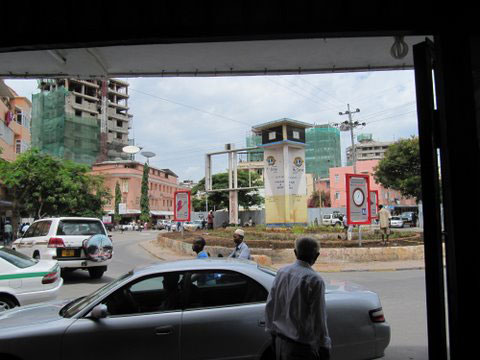
Dar-es Salaam Street - Photo taken from Kakubhai Panwala's original shop looking towards
the traffic circle and Odeon Cinema ( still there 2011) the pink building
further. (sent by Elyas Sardharwala)
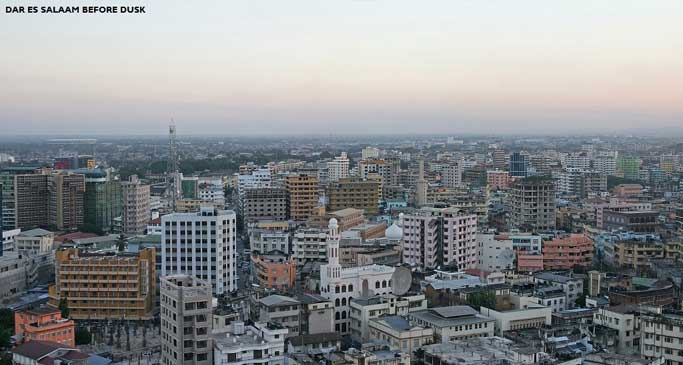
DAR-ES-SALAAM DURING THE FIFTIES -SEE THIS COMPILATION BY TAHIR MIRZA ....CLICK HERE
Dodoma
See & read about Dodoma Hotel (sent by Tahir Mirza).....pdf click
ELDORET
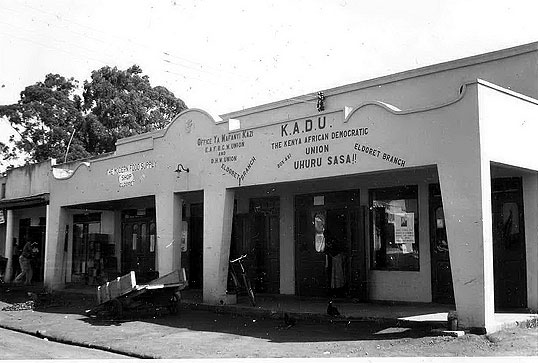
KADU headquarters Eldoret- before Uhuru (sent by Tahir Mirza)
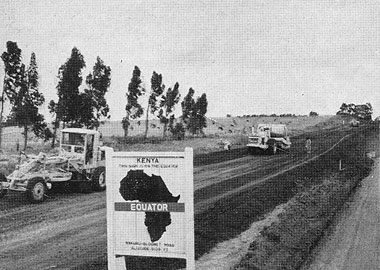
The building of 9000 ft above sea level Nairobi Eldoret Road near the equator - 1959
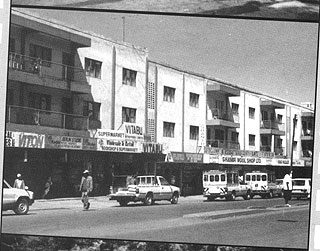
Street in Eldoret 60's
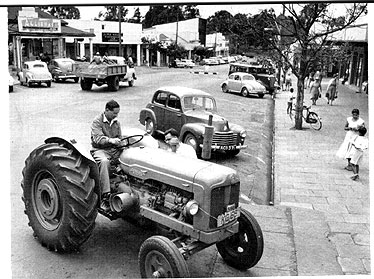
Main Street Eldoret 1960
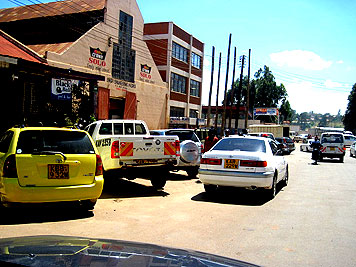
A street in Eldoret 2009 (photo courtesy Kuldip Attalia)
EMBU
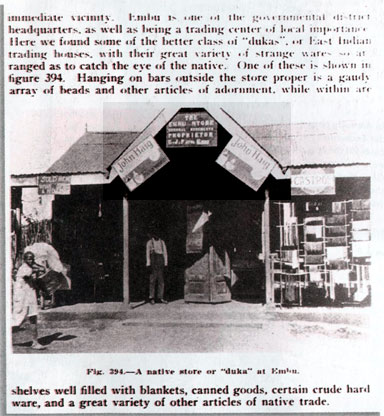
A duka in Embu (courtesy We came in dhows)
ENTEBBE
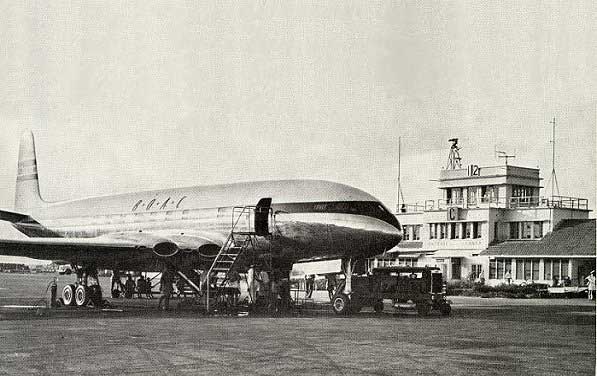
Entebbe Airport
See this site for pictures of Entebbe in detail
http://tech.mak.ac.ug/oldsite/heritage/entebbe.php
FOURTEEN FALLS
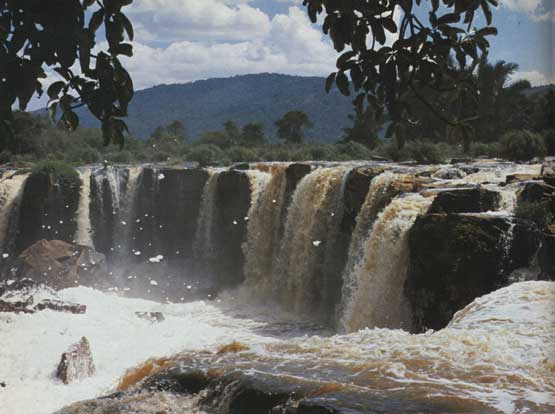
The 'Fourteen Falls' - a beautiful picnic spot for the Kenyans (courtesy 'The Kenya Magic'
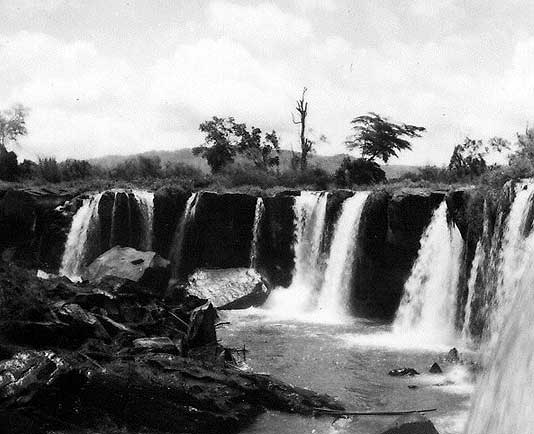
Another view of 'Fourteen Falls' 1955 (sent by Rajni Shah)
Gatundu
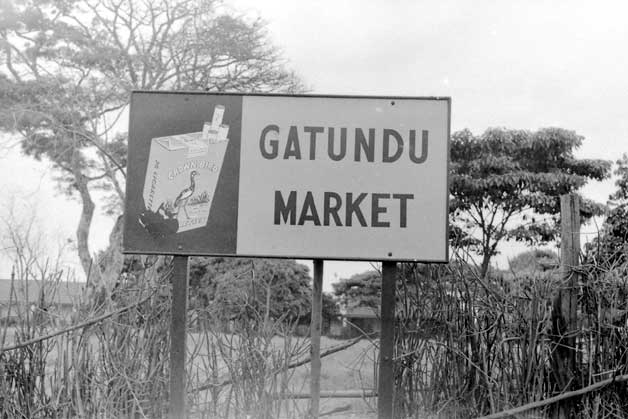
Gatundu Village is birthplace of Mzee Jomo Kenyatta.1950 (sent by Rajni Shah)
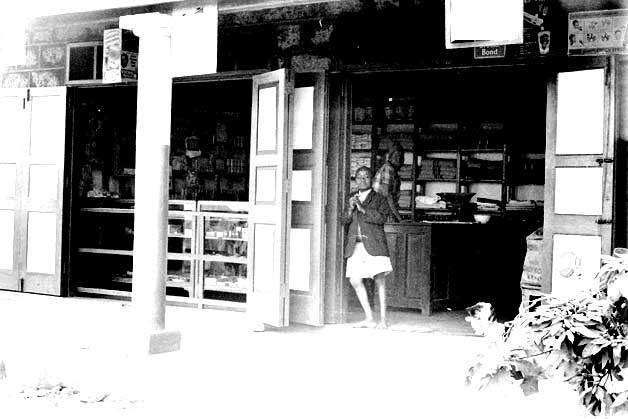
Gatundu village shop fifties (sent by Rajni Shah)
JINJA
READ HISTORY OF JINJA (sent by Natwar Joshi)..click here
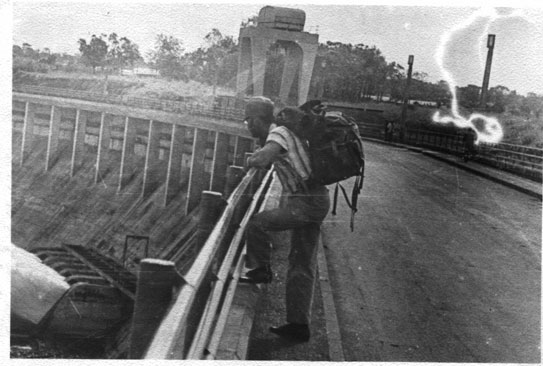
This photo was taken on the Owen Falls Dam Jinja in 1962 during my friend Varinder Lamba and mine hitch hiking trip around East Africa. This is me standing on the rails of the dam.
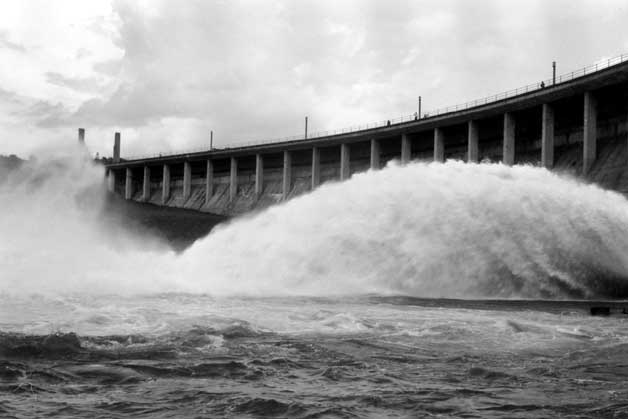
The might of the Owen Falls Dam 1960 (sent by Rajni Shah)
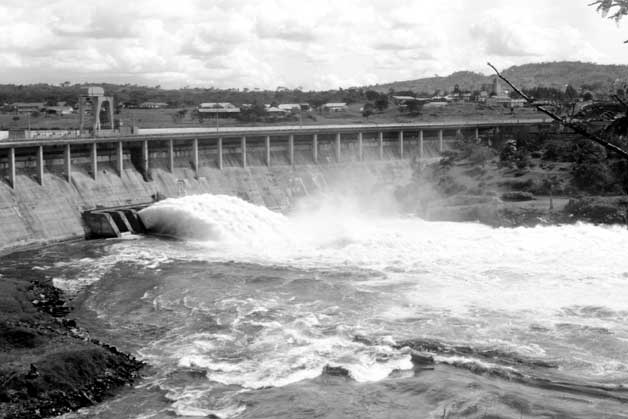
The might of the Owen Falls Dam 1960. Supposed to be the source of River Nile(sent by Rajni Shah)
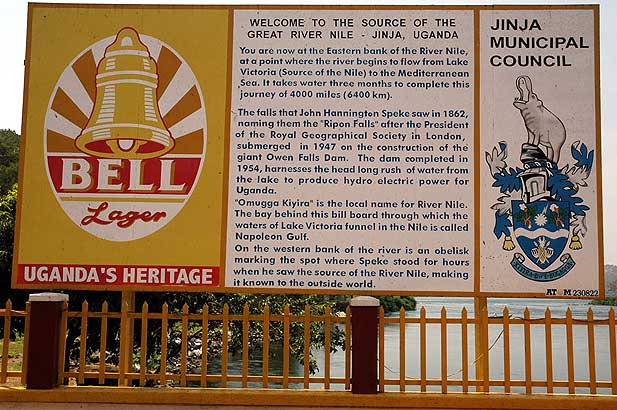
Source of the Nile poster (courtesy Charan Kundi)
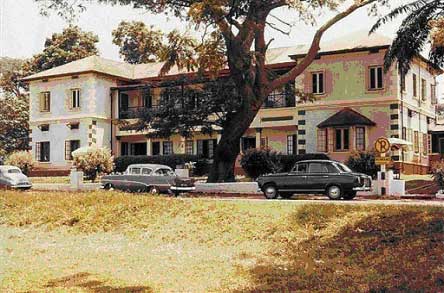
Ripon Falls Hotel, Jinja -in full glory in 1962 .(also featured in a movie)
And how it is now. What a tragedy of utter neglect and disrespect of a past heritage!
For above, human beings are responsible………..

(sent by Tahir Mirza)
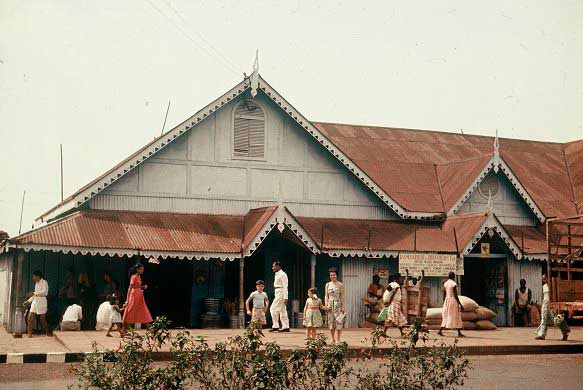
A street scene -Jinja (Photo courtesy the late Jim and Hilda Dixon-taken with thanks from http://www.mccrow.org.uk/eastafrica)
For more pictures of Jinja see
http://tech.mak.ac.ug/oldsite/heritage/jinja.php
MORE JINJA (SENT BY SUMAN DATTANI)
http://www.youtube.com/watch?v=OzusfSuFvX4
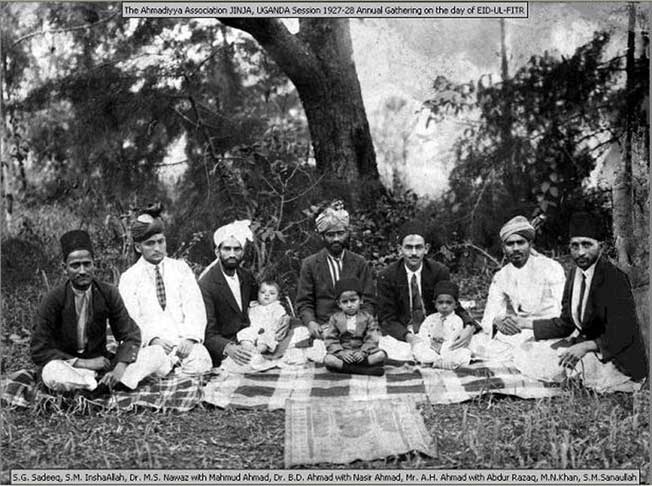
Celebration of Eid in 1927 by members of the Ahmadiya Community (sent by Misbah Baloch)
KERICHO
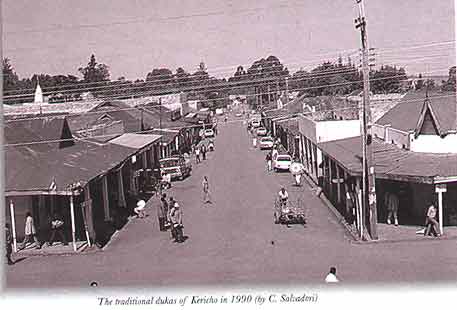
A street in Kericho
KAMPALA
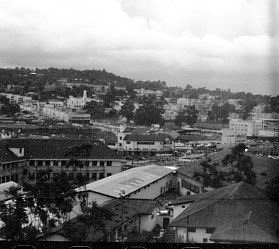
Kampala 1960 (sent by Rajni Shah)
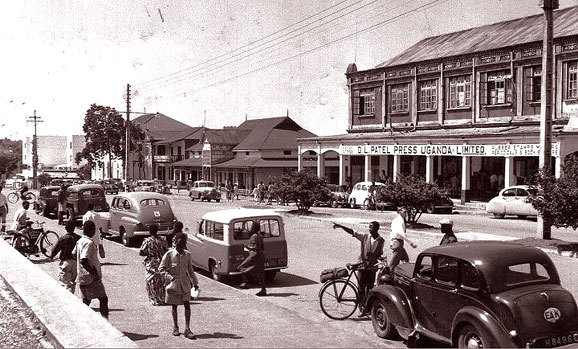
1954:Kampala Road, snapped from the edge of the then Post Office. Diagonally, the KGA building & the next to it, gave way to the building that had Camera Center; and the Bank of Baroda, respectively. Also note the autos of the time. (photo courtesy Ameer Janmohammed)
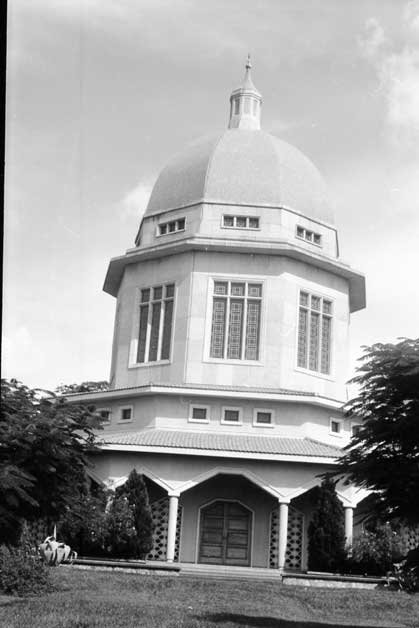
Bahaii Temple Kampala 1960 (sent by Rajni Shah)
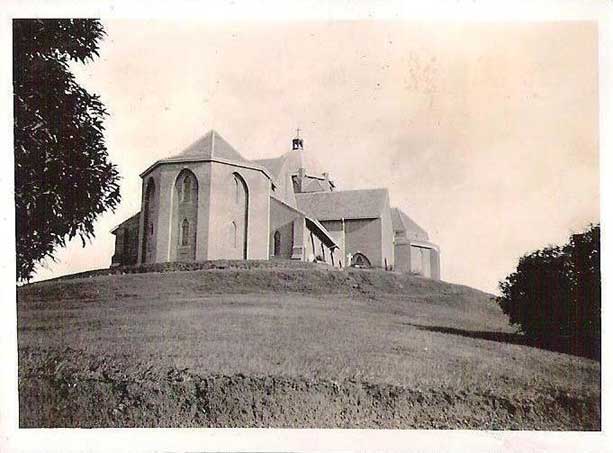
Namirembe Cathedral 1936 (sent by Roger Sharland)
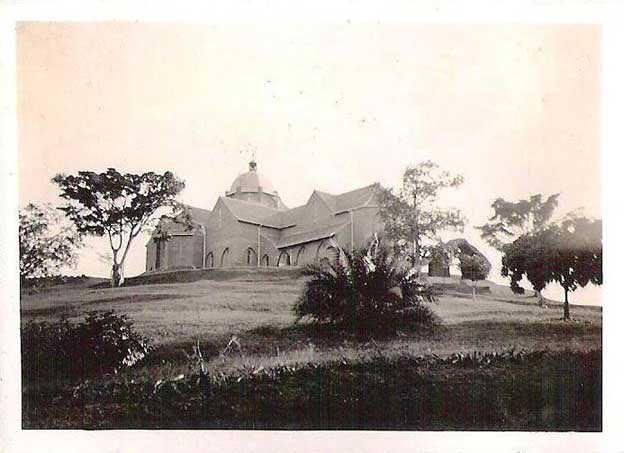
Another view of Namirembe Cathedral1936 (sent by Roger Sharland)

A church somewhere in Kampala 1960 (sent by Rajni Shah)
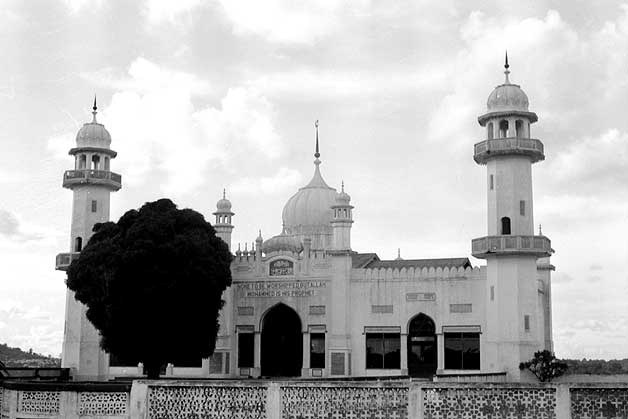
A Mosque somewhere in Kampala 1960 (sent by Rajni Shah)
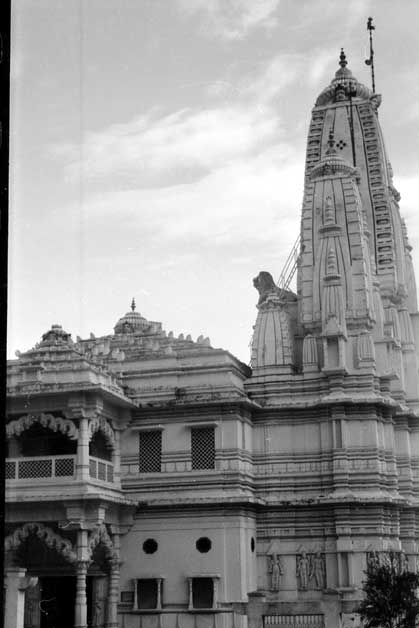
A Hindu Temple in Kampala 1960 (sent by Rajni Shah)
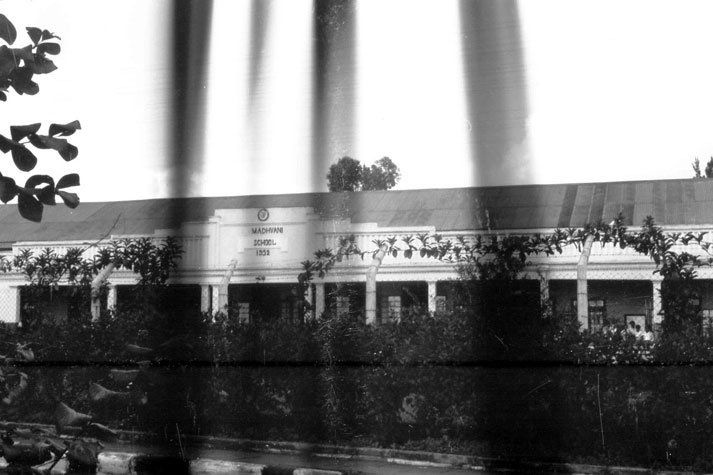
Madhwani School 1952 probably in Kakira (sent by Rajni Shah 1960)
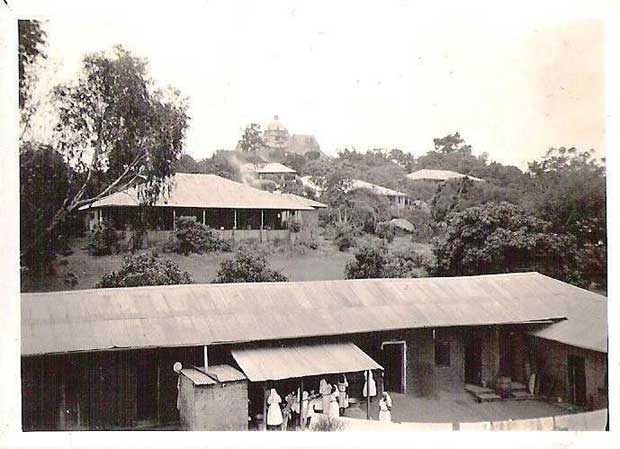
View from Maternity ward Mengo Hospital 1936 (sent by Roger Sharland)
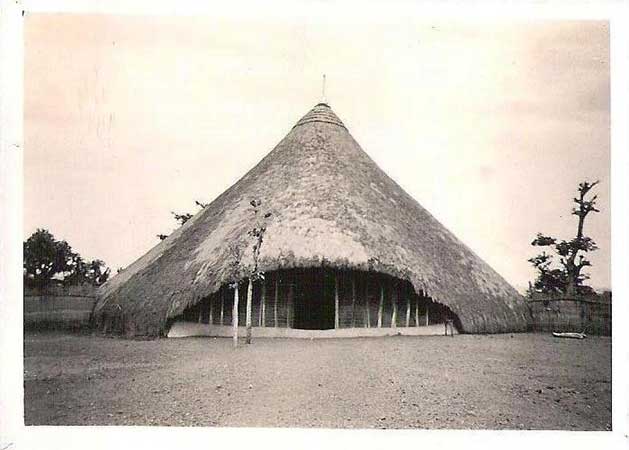
The Kasubi Tombs in Kampala, Uganda, is the site of the burial grounds for four kabakas (kings of Buganda), and a UNESCO World Heritage Site. (sent by Roger Sharland- photo taken in 1936)
On 16 March 2010, some of the major buildings there were almost completely destroyed by a fire, the cause of which is under investigation. The Buganda Kingdom has vowed to rebuild the tombs of their kings and President Museveni said the national government of Uganda would assist in the restoration of the site.The following photos of Kampala have been sent by Avtar Sehmbi (Thanks)
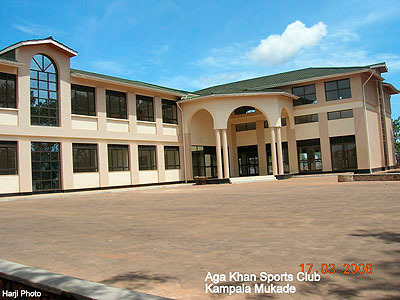
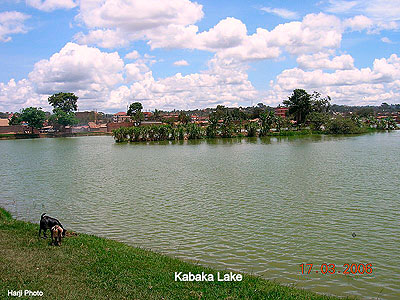
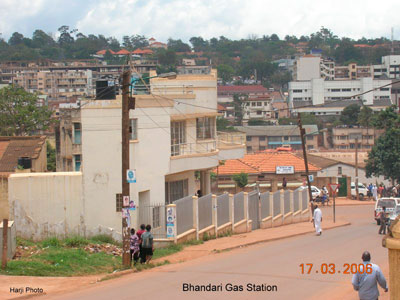
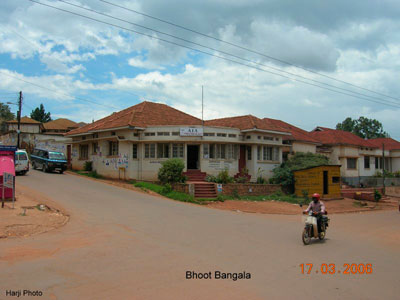
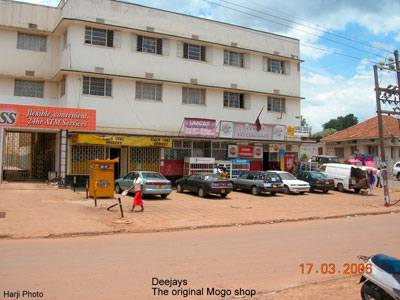
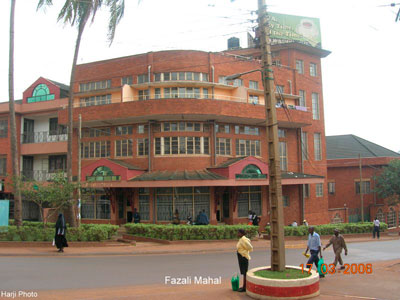

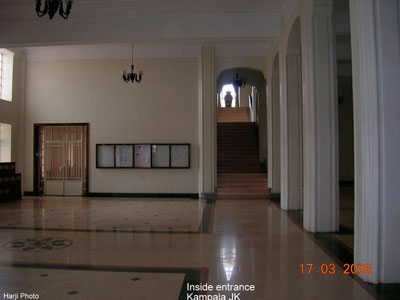
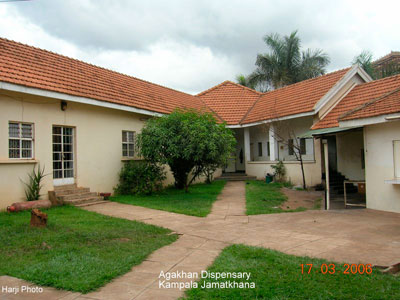
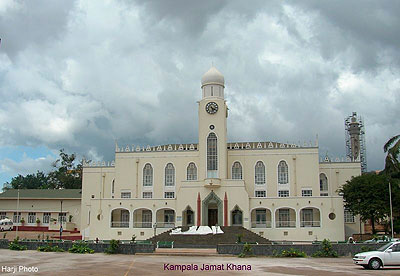
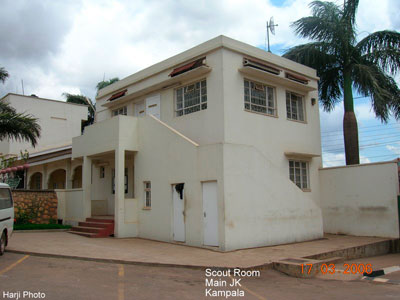
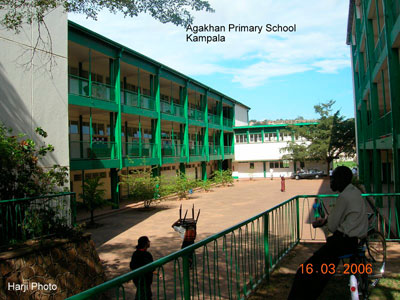

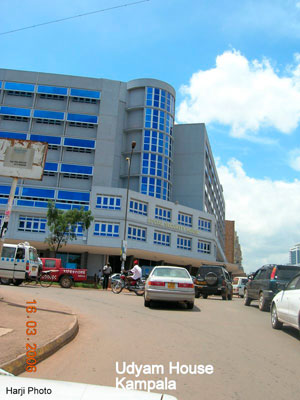
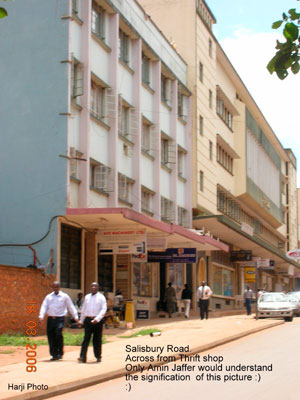
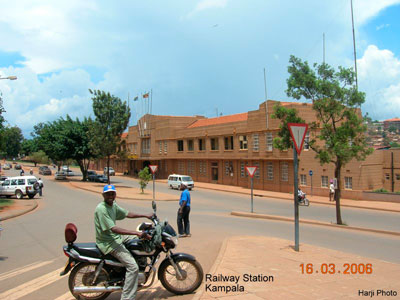
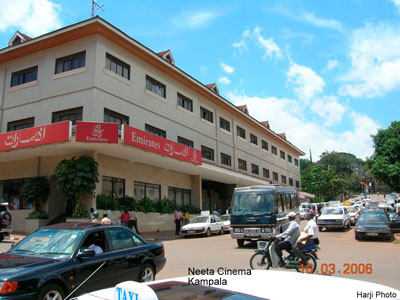
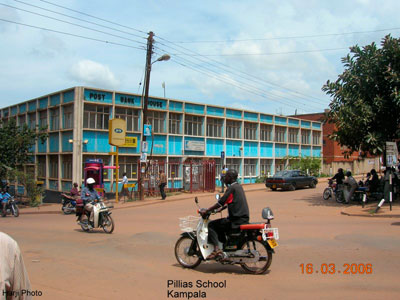
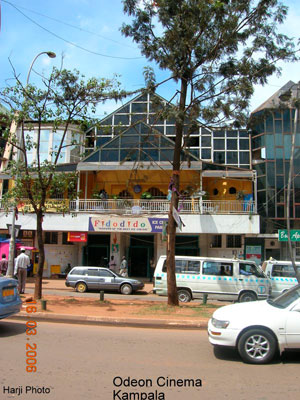

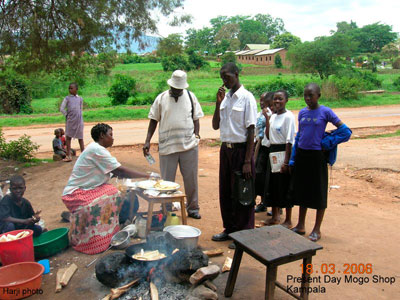
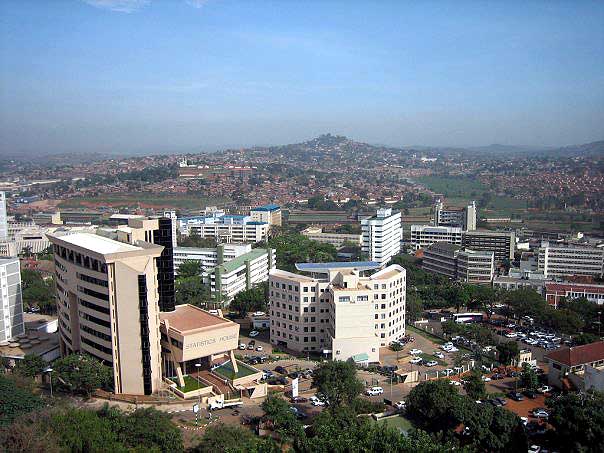
Modern Kampala
To see more pictures and history of Kampala click
http://tech.mak.ac.ug/oldsite/heritage/kampala.php
Kiambu
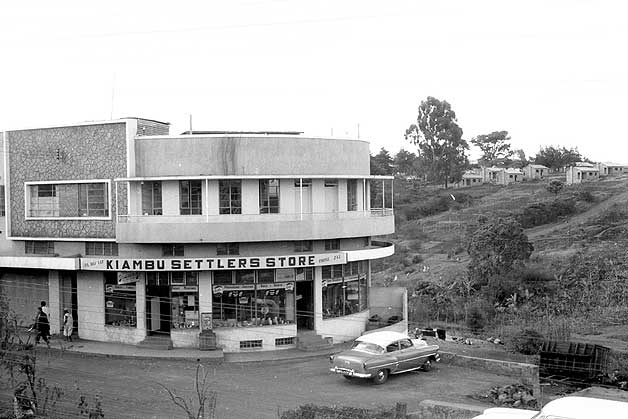
Kiambu Settlers Store 1960 (sent by Rajni Shah)
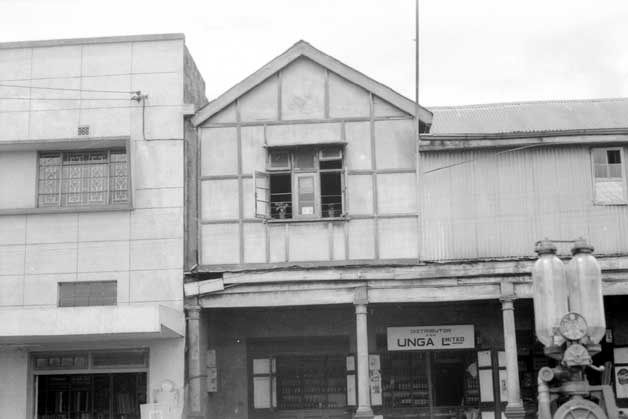
A grocery shop selling Unga ltd Flour 1960 (sent by Rajni Shah)
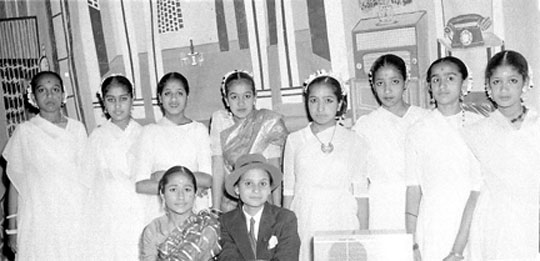
Girls of Kiambu Girls School holding a variety show 1959 (snapped by Rajni Shah)
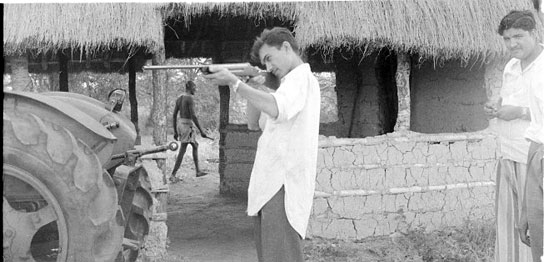
ShotGun Rajni trying his aim in Kiambu 1959. As those were Emergency years with Mau Mau insurgence, people were allowed to keep guns.
Kiganjo
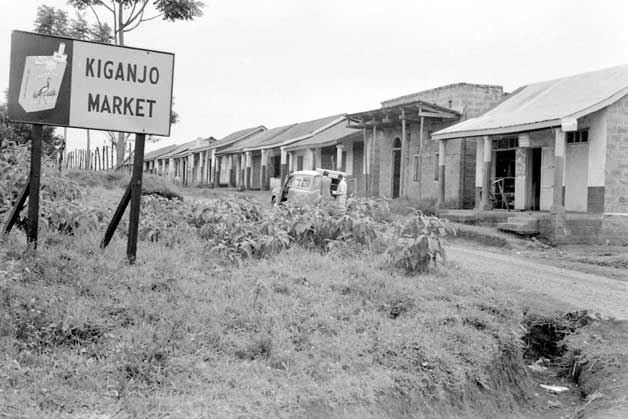
Kiganjo Market around 50's (sent by Rajni Shah)
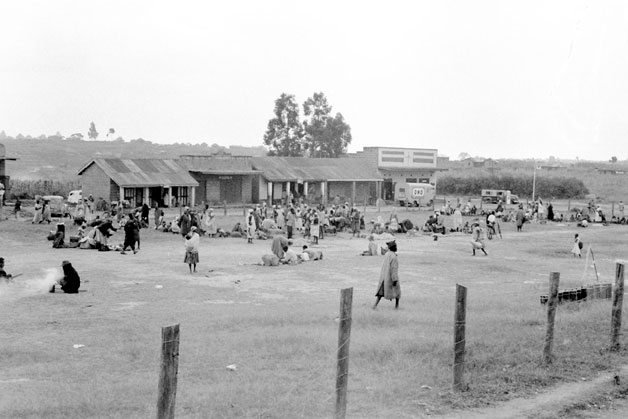
Kiganjo Village market 50's (sent by Rajni Shah)
Kisii
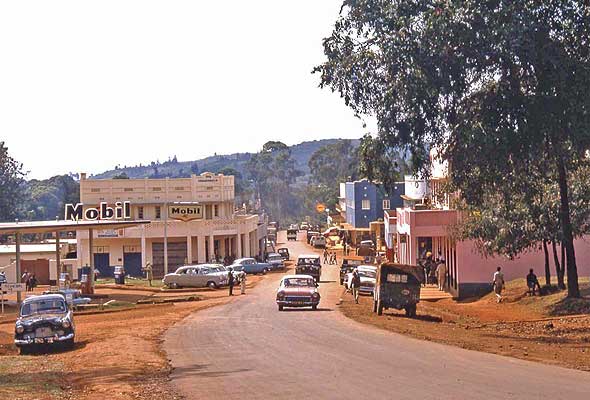
Kisii township around 1966 (sent by Ron Bullock)
KIGOMA
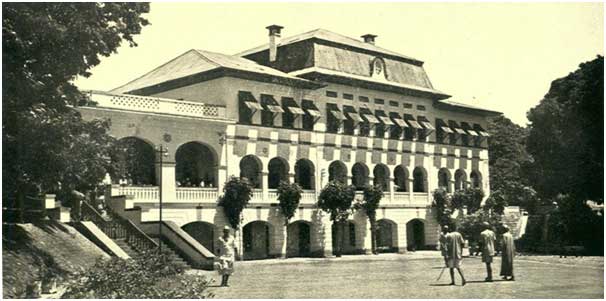
Kigoma Station on the shores of Lake Tanganyika (1956).
Situated 780 miles east of Dar es Salam. The station building is a well preserved example of a sturdy construction of German East Africa times and of pleasing architecture standing in picturesque surroundings. Three miles away from Kigoma is an old Arab port of Ujiji where a monument marks the site of a mango tree beneath which Stanley met Livingstone in 1871 and the famous but laconic introduction “Dr. Livingstone, I presume”. Jolly nice of you to pop in, I say. (sent by Tahir Mirza)
KISUMU
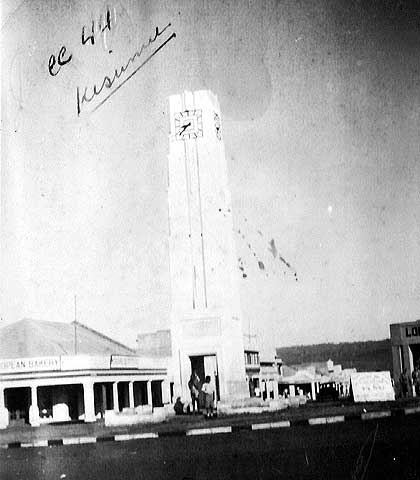
Clock Tower Kisumu 1944 photograph by Meghji Shamji Shah (sent by Rajni Shah)
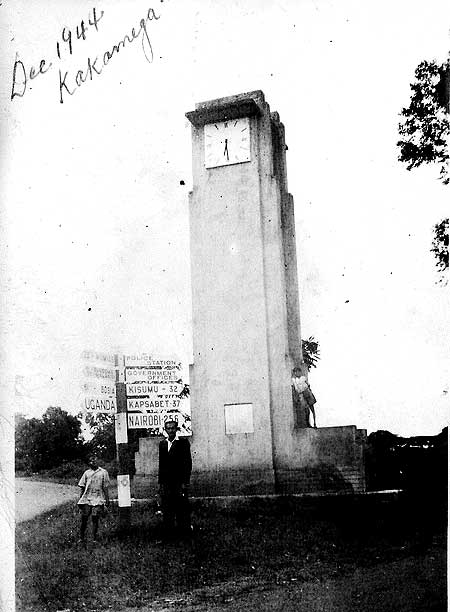
Kakamega Clock Tower 1944. See the Mile sign boards Photo by Meghji Shamji Shah.(sent by Rajni Shah)
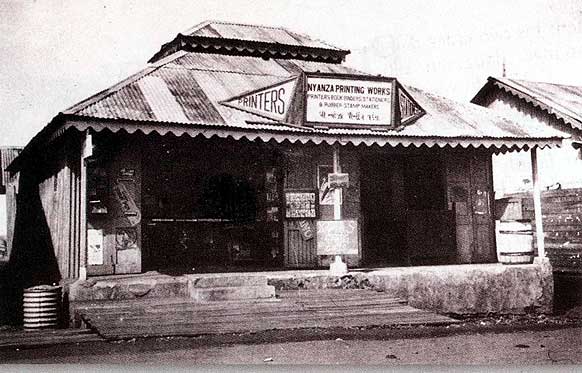
First Printing Press in Kisumu owned by Vithalji Harji Jobanputra in 1928 (courtesy We came in dhows)

Central Square-Kisumu
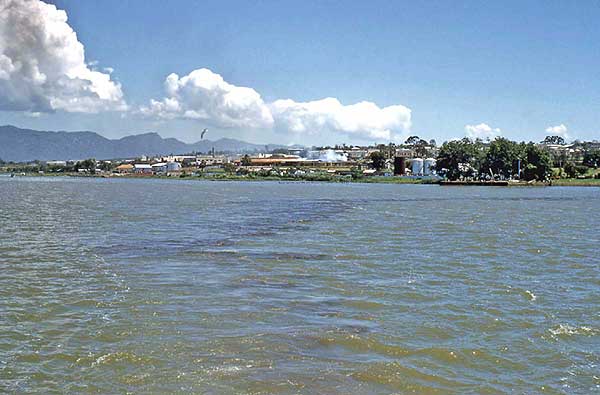
Kisumu from Lake Victoria around 1954 (sent by Ron Bullock)
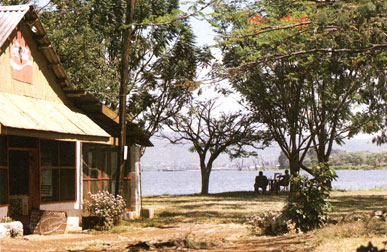
Hippo Point - Lake Victoria Kisumu
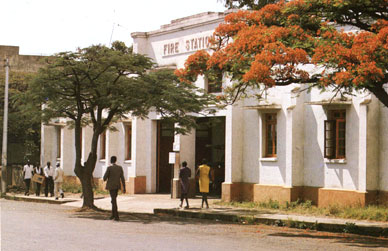
Fire Station - Kisumu
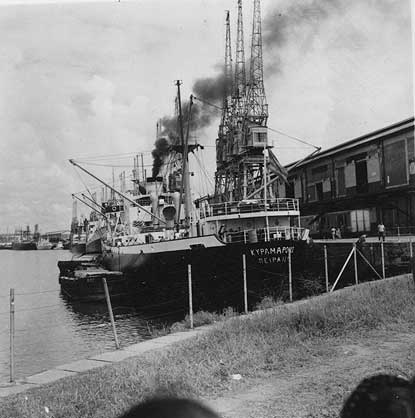
A ship on the docks of Kisumu in Lake Victoria 1950's
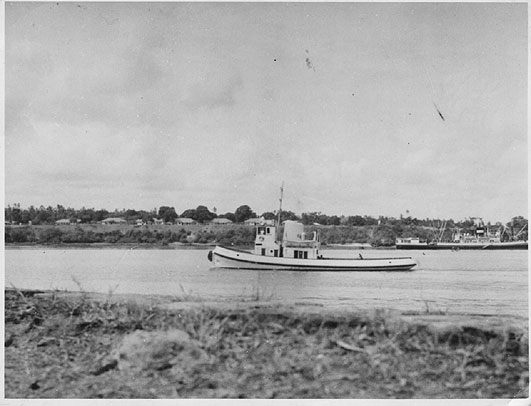
A small ship on Lake Victoria
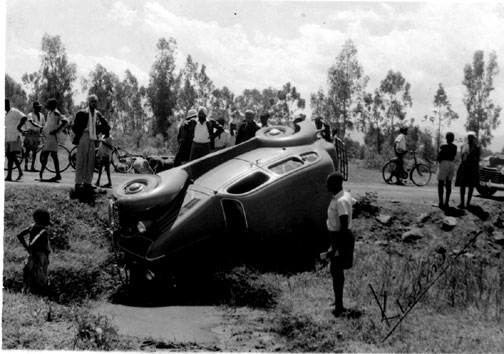
Accident around Kisumu 50's
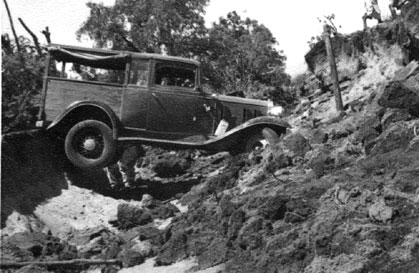
Another accident Kisumu around 50's
LAMU
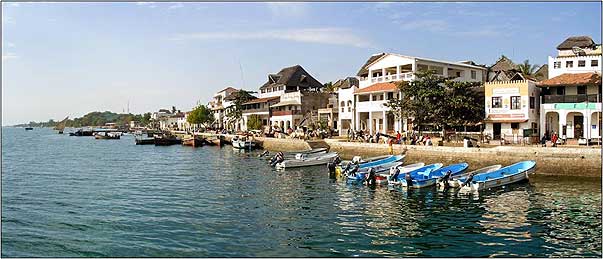
Lamu on the sea front
Leprosy Island
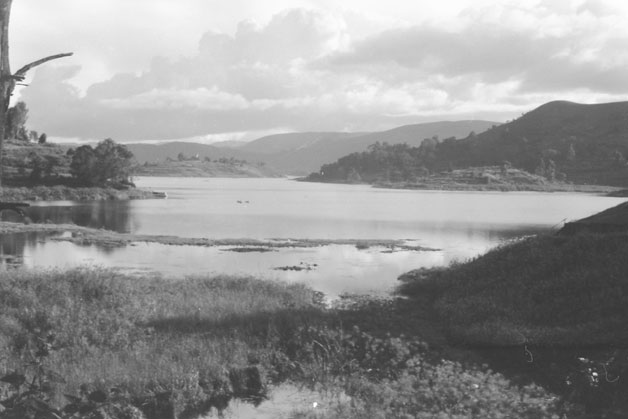
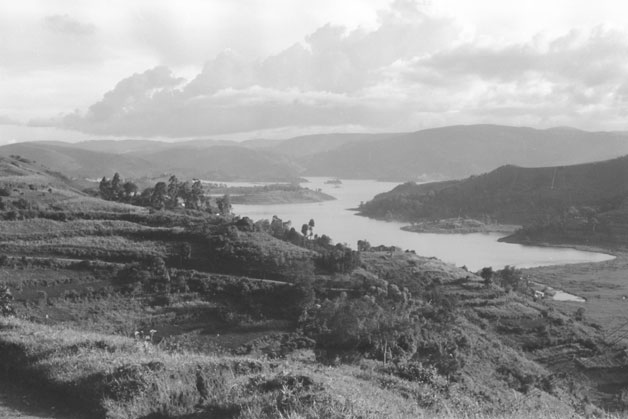
Photos of Leprosy Island, this is mountainous country , we were supposed to drive through to Ruwenzori mountains, unfortunately there was an earthquake so we stopped at Mbarara. We crossed over the border at Mbarara in to no zone border between Uganda and Congo (Rajni Shah)
Londiani
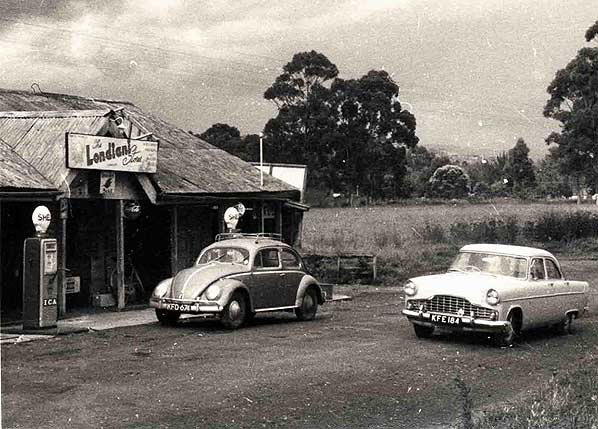
Londiani Stores, Londiani around 1954 (sent by Ron Bullock)
Mau Summit
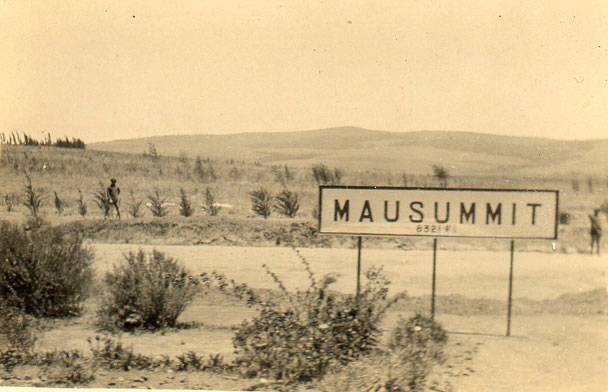
Mau summit (sent by Robin Grayson)
Masindi town
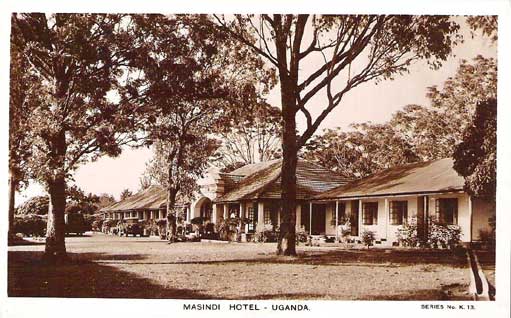
Masindi Hotel (sent by Dr. Roger Sharland)
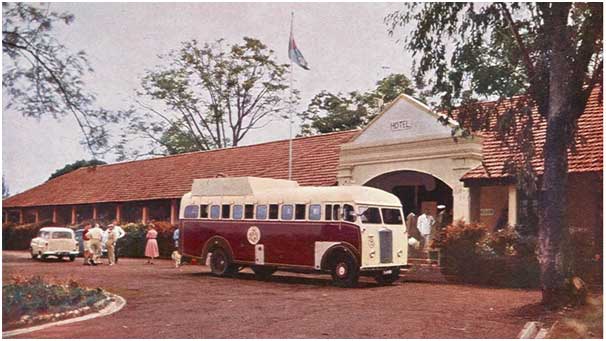
Masindi Hotel
Masindi Hotel – Uganda 1956. The first class bus is seen here bringing passengers from Masindi Port nearby.
History:Masindi Hotel is Ugandas' oldest hotel having been built in 1923 by The East Africa Railways and Harbours Company. Masindi was the gateway to the hinterland of Africa where goods and produce from the Northern Congo and Southern Sudan found their way to European markets. Cargo was shipped across Lake Albert, trucked from Butiaba up to Masindi Customs Sheds. From Masindi, goods were trucked on to Masindi Port on Lake Kyoga where it was shipped down to Soroti and then by railway to Mombasa
Sent by Tahir Mirza)

Masindi Hotel – Recent. Still running and doing business.
MBALE
(sent by Suman Dattani)
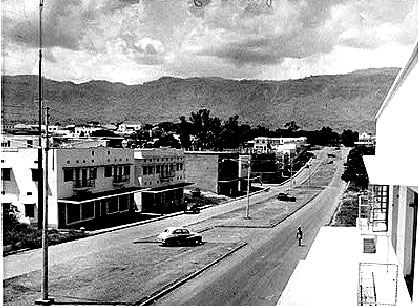
street in Mbale (courtsey http://www.mbalejambo.org.uk/mbale_005.htm)
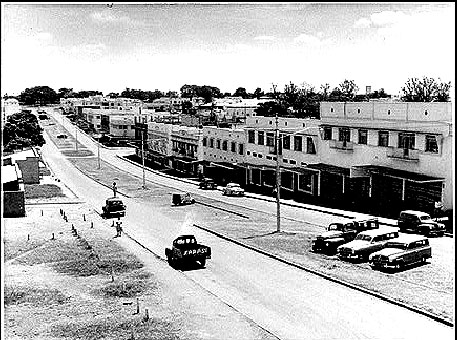
street in Mbale (courtsey http://www.mbalejambo.org.uk/mbale_005.htm)
MBEYA
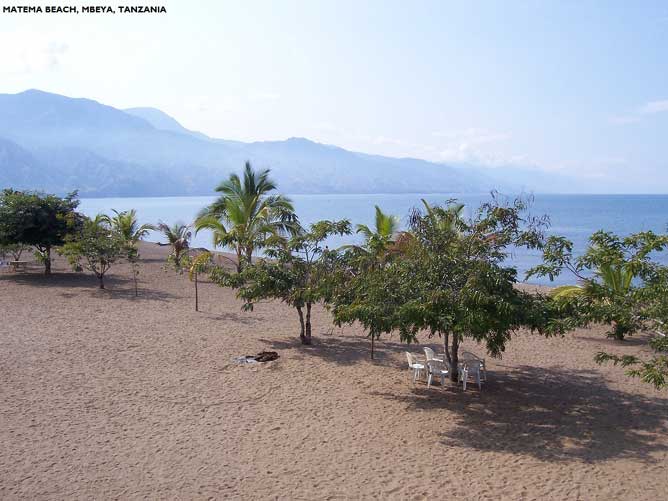
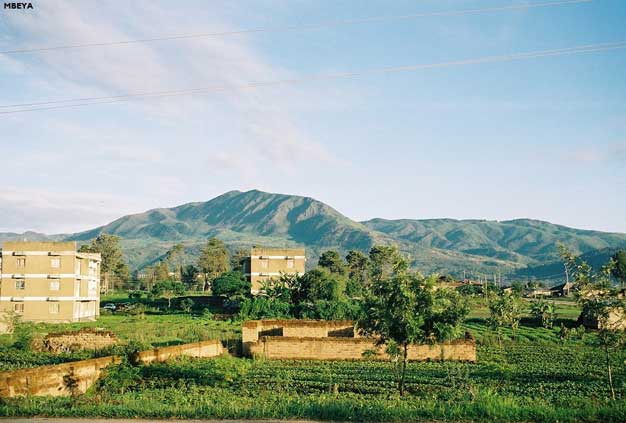
MOROGORO
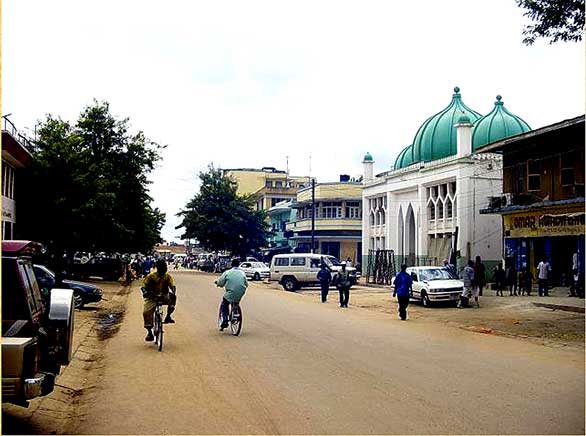
Street in Morogoro
MOSHI
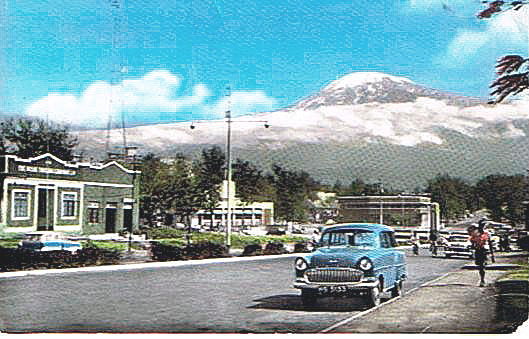
Mount Kilimanjaro from Mwenzi Road Moshi 1964 (photo courtesy Dhamianti Bhogal)
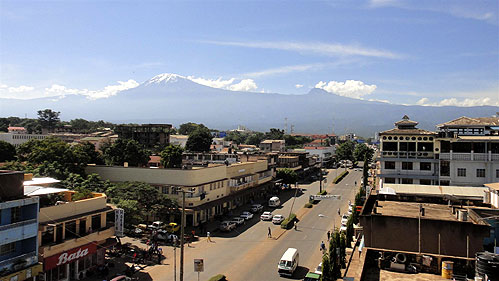
The Kilimanjaro looms over the town of Moshi
SEE MOSHI THEN AND NOW (SENT BY TAHIR MIRZA).........CLICK HERE
MWANZA
See Scenes of Mwanza - sent by A.K.Bagha...Click for pdf file
NAIVASHA
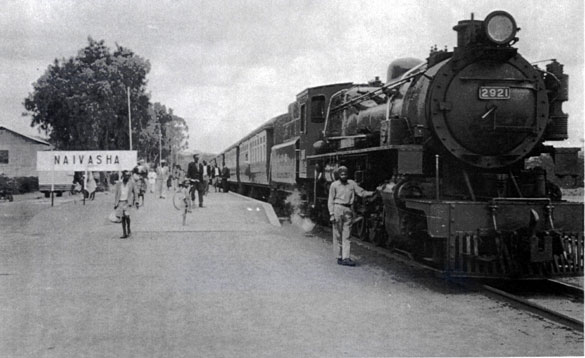
Train at Naivasha Station with Sikh driver around 1955/60
NAKURU

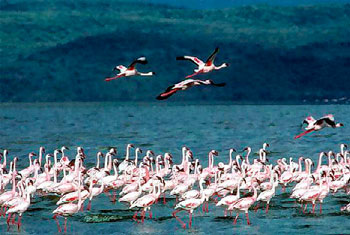
Flamingoes on Lake Nakuru
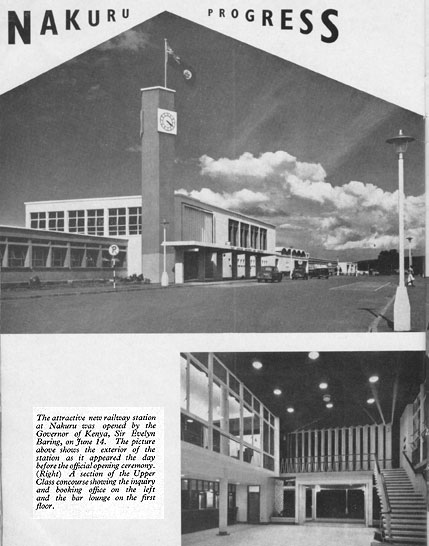
Nakuru Railway Station - a landmark at the time - (Courtesy Kenya today 1957)
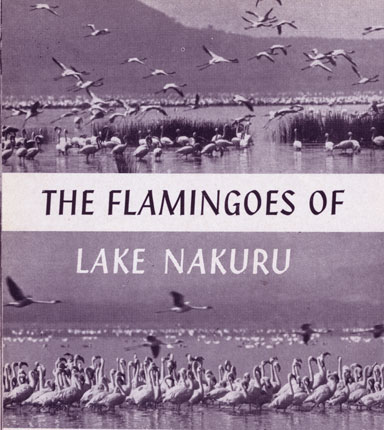
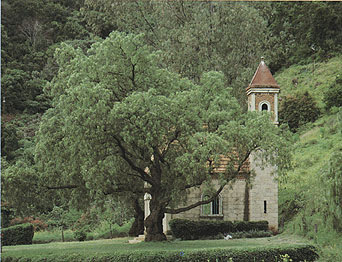
St. Mary of the Angels church (top & bottom)on the way from Nairobi to Nakuru in the Rift Valley, built by Italian POW'S, who held their first service on X'mas day 1943 (courtesy 'The Kenya Magic' )

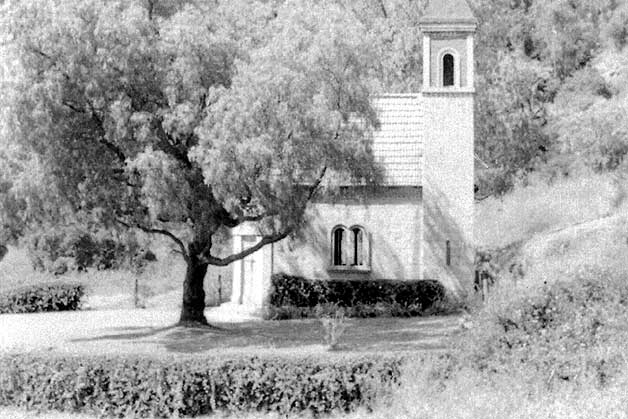
The Italian POW built church in the Rift Valley 1960 (sent by Rajni Shah)
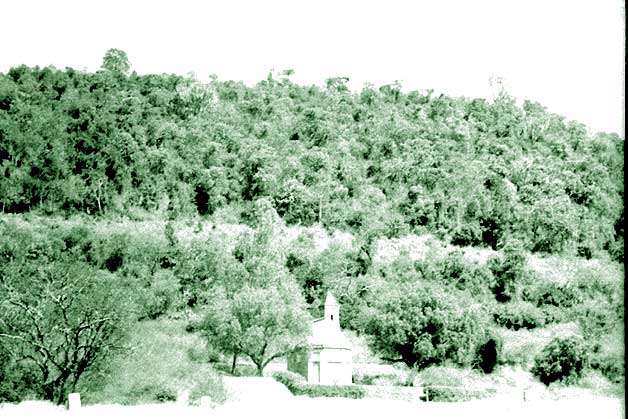
The church surrounded by dense forest 1960 (sent by Rajni Shah)
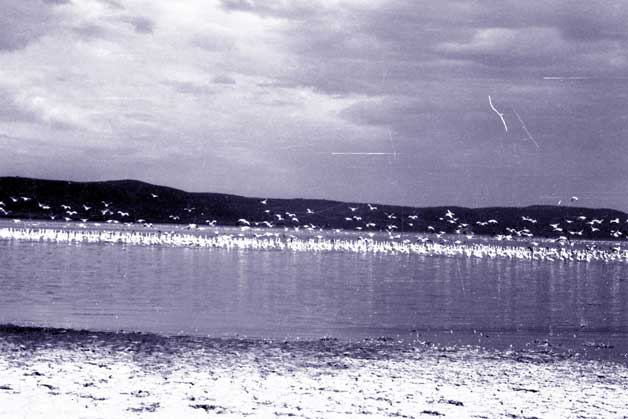
Flamingoes beautify the Lake Nakuru 1960 (sent by Rajni Shah)
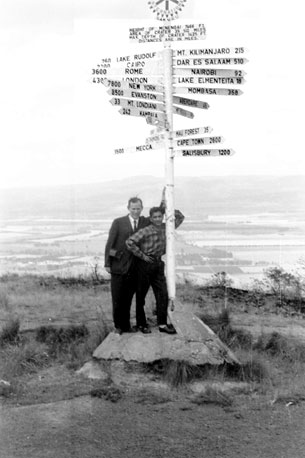
Near a Sign/mileage poster 1960(sent by Rajni Shah)
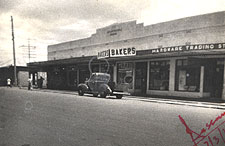
Main street in Nakuru 1950's
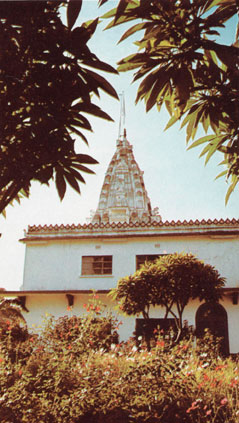
Krishna Temple (courtesy through open doors)
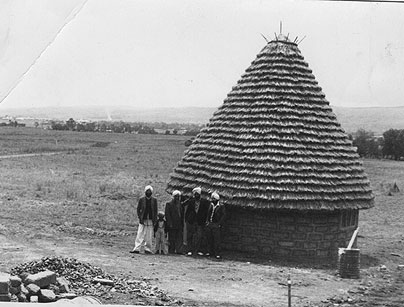
Workers who constructed the Langa Langa track at Nakuru pose along an African Home around 50's
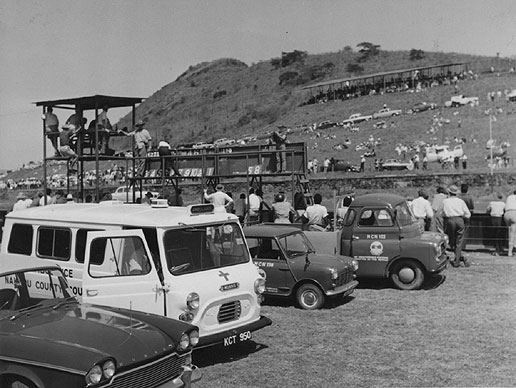
Nakuru racing track known as langa langa track
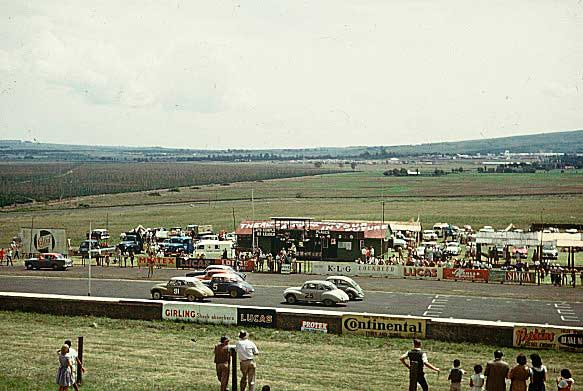
Cars line up for race at Nakuru Race track (langa langa) (Photo courtesy the late Jim and Hilda Dixon-taken with thanks from http://www.mccrow.org.uk/eastafrica)
Some more nostalgic memories of the Nakuru Langa Langa Track - sent by Shindae Punny
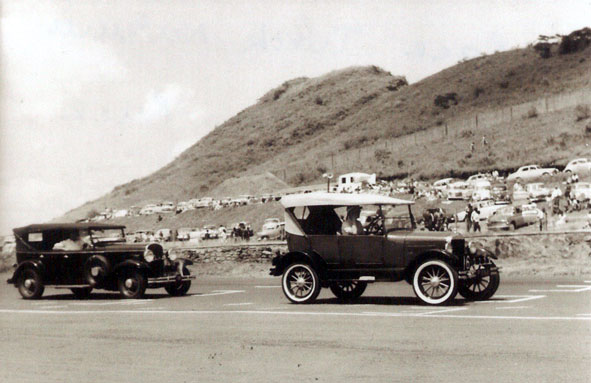
Vintage Cars on track
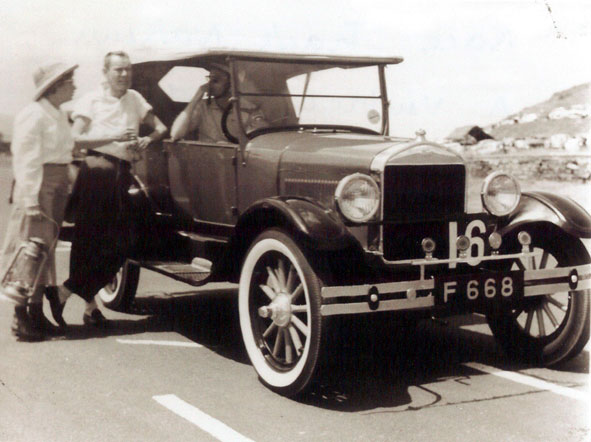
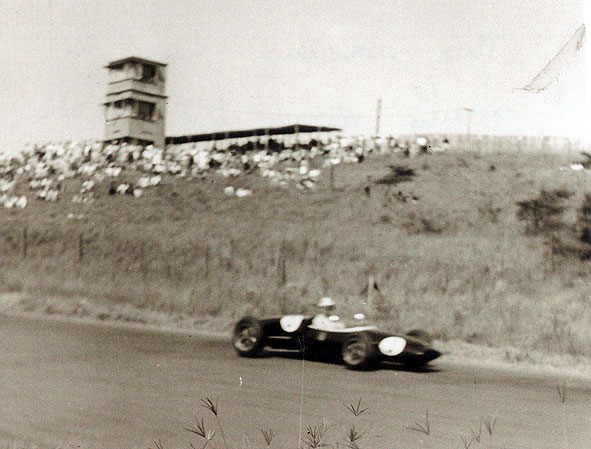
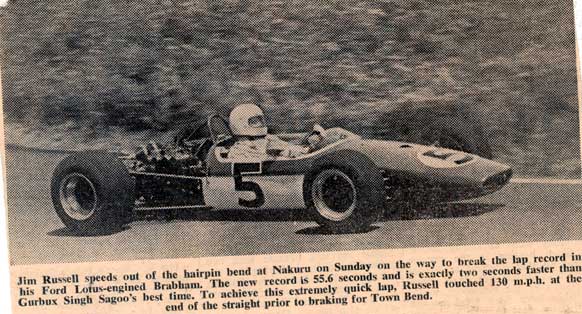
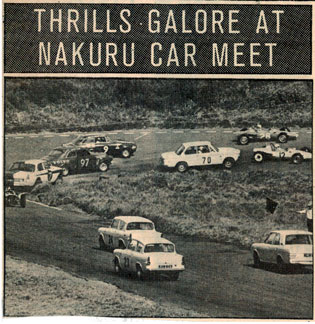

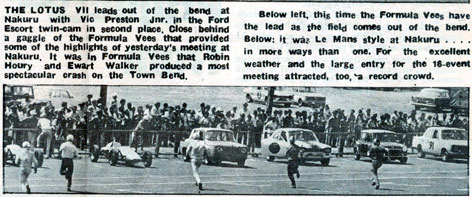
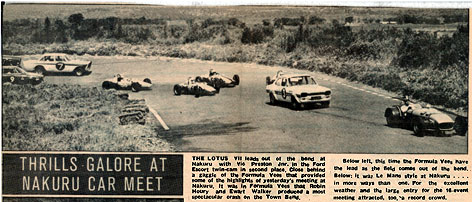
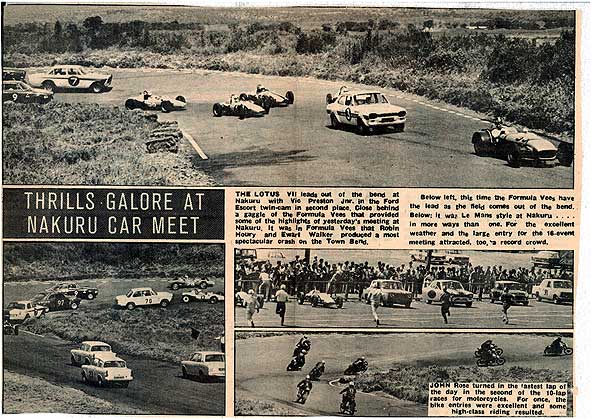

Could you help me trace what happened to the Le Gallais Special?
This was imported into Kenya by a man called Shepherd and raced by several people, on some occasions at Nakuru I believe.
Nobody seems to know what happened to it after 1967 when it was rolled by a man called Salt.
I attach a photo which was used for an ad to try and find the car.
I am a friend of Peter Le Gallais, the son of the cars builder. (Thanks Gerard van Dam)
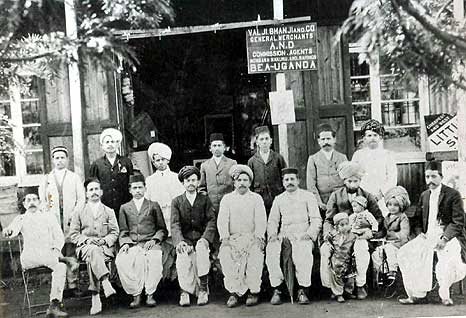
Employees outside Mr Valjis shop. Ibrahim seated 3rd from right. THE KARIMBUX’S WERE ONE OF THE FIRST PIONEERS AMONGST MANY OTHER ASIAN FAMILIES TO HAVE SETTLED IN KENYA,EAST AFRICA IN 1895. THEY MADE A GREAT NAME FOR THEMSELVES AND HAD A HISTORY THAT GOES BACK A LONG WAY. THEY WERE TRULY DEDICATED TO KENYA AND CONTRIBUTED TREMENDOUSLY TO THE COUNTRY AND THE COMMUNITY Read all about the Karimbux family on http://karimbuxhousenakurukenya.blogspot.com/ (sent by Shindae Punny)
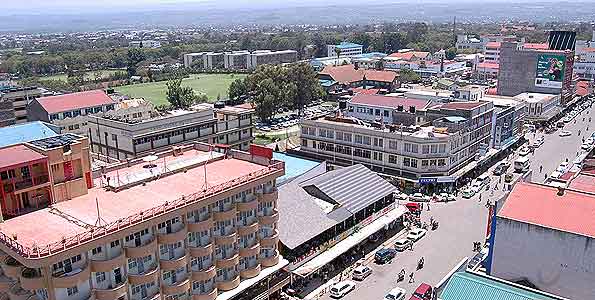
A recent photograph of Nakuru (2010)
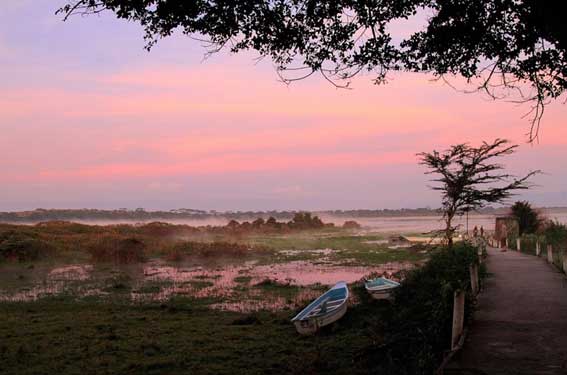
A picturesque view of Lake Naivasha
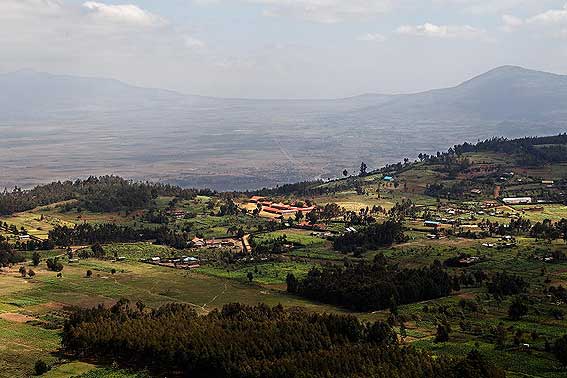
The Great Rift Valley
NAMANGA
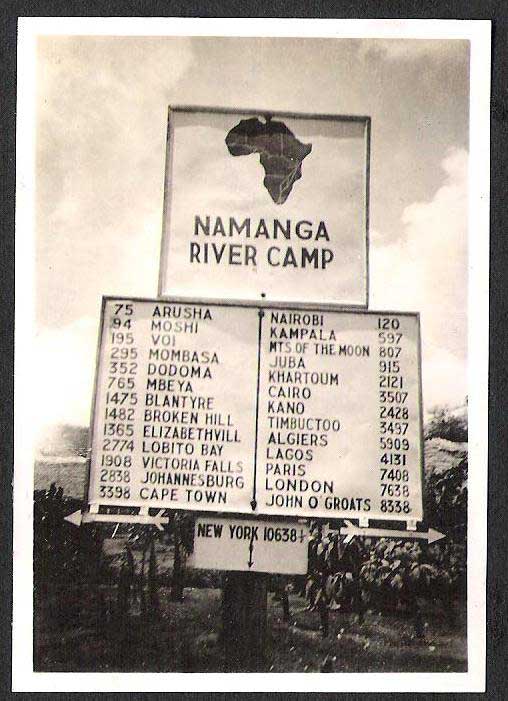
Namanga River Camp 1936 (sent by Roger Sharland)
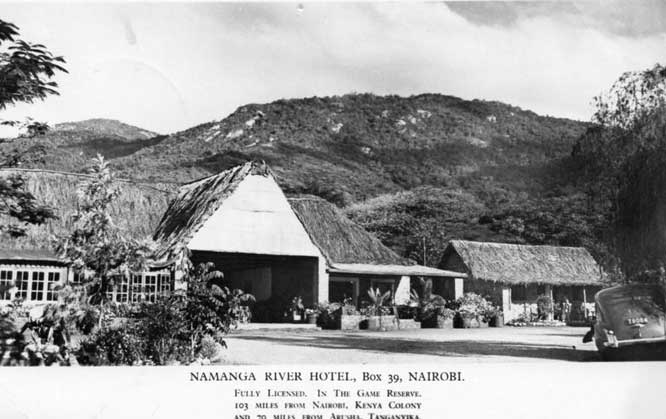
Namanga Hotel (sent by Rajni Shah)
Namanga then and now ..click
NANYUKI
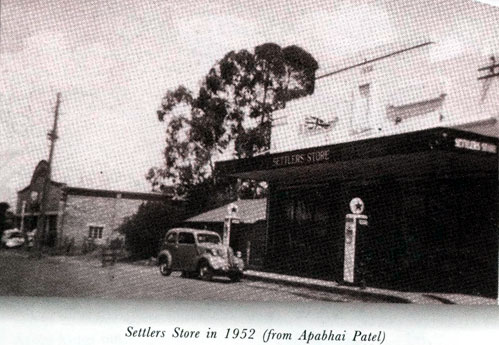
Settlers Store Nanyuki 1952 (courtesy we came in dhows)
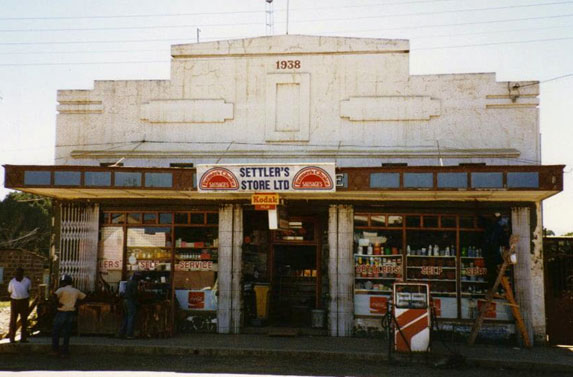
Settlers Store in later years (sent by Tahir Mirza)
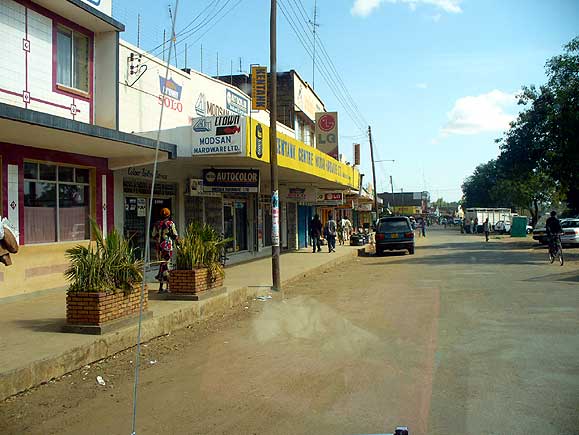
Street in Nanyuki (sent by Narendra Shah)

Marina Grill Nanyuki (sent by Narendra Shah)
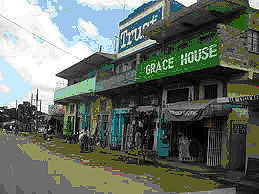
Grace House Nanyuki (sent by Narendra Shah)
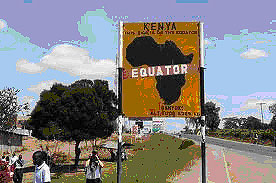
Equator near Nanyuki (sent by Narendra Shah)
NAROK
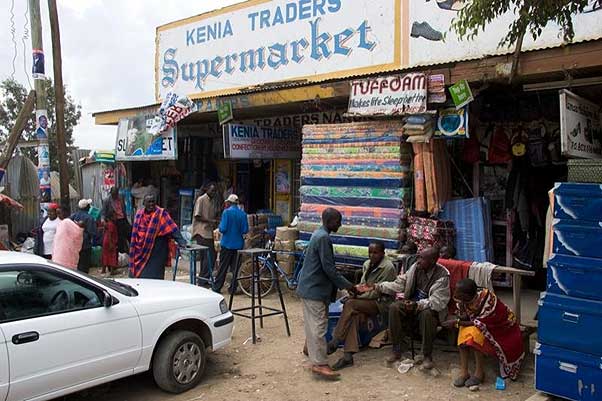
A Narok Supermarket
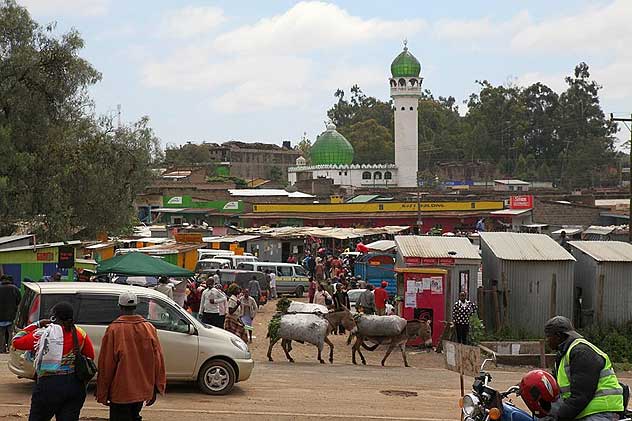
Narok town centre
NGORONGORO CRATER
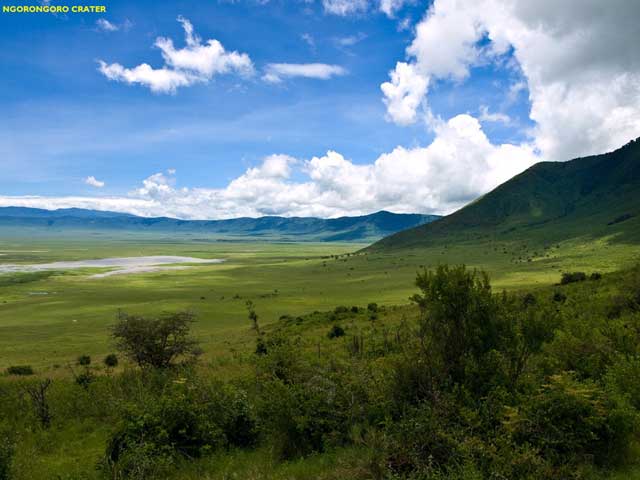
NYERI
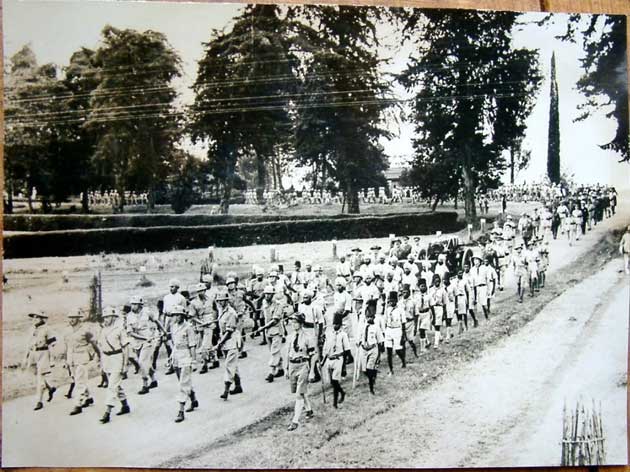
Procession of Scouts for funeral of Lord Baden Powell of the Scout movement. 1941 (sent by Rajni Shah)
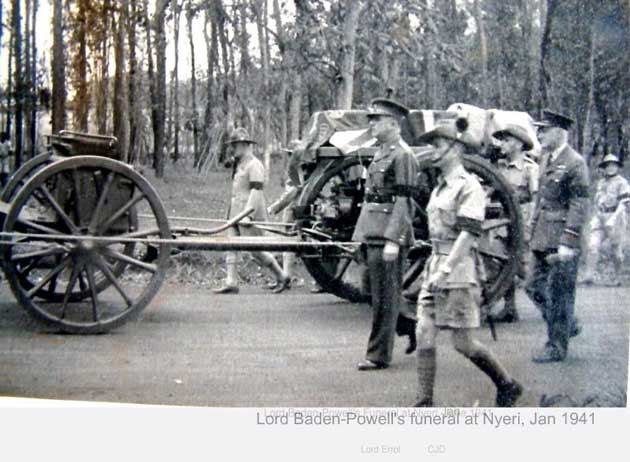
Gun Salutes for Lord Baden Powell (sent by Rajni Shah)
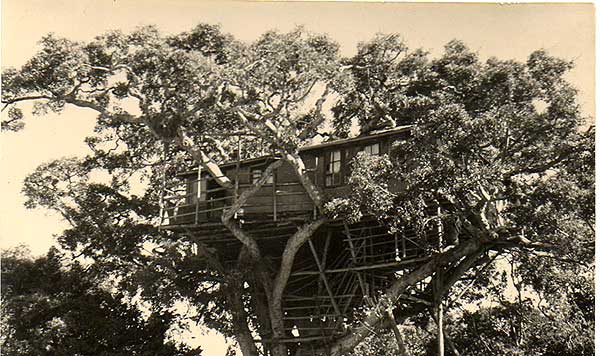
Treetops where Princess Elizabeth woke up as Queen 1953 (sent by Robin Grayson)

Treetops, the 'Jungle Hotel', which is a combination of luxury guest house and game watching point in the mountain forest of the Aberdares range, near Nyeri, Kenya. The building completed in June 1957, replaced the old Treetops, built in the brances of a giant fig tree in 1932, which was visited by more than 8000 people including Queen Elizabeth. (Courtesy Kenya today 1957)
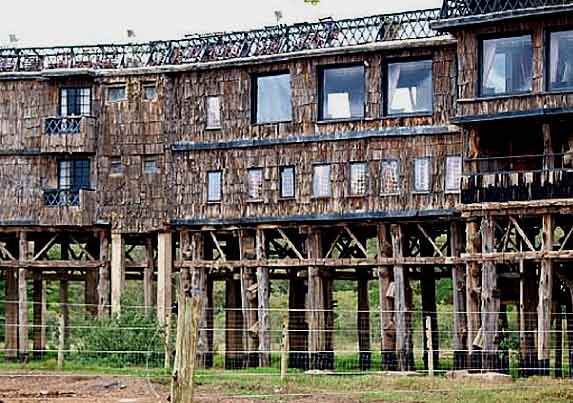
Treetops hotel (sent by P shah)
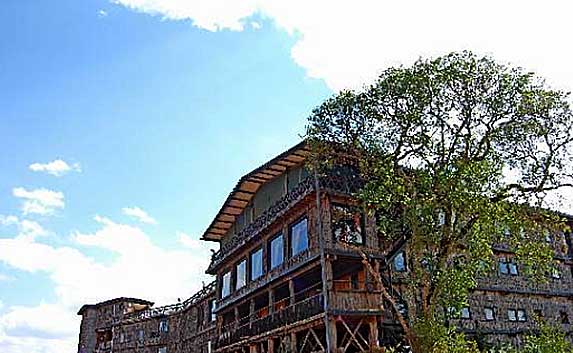
The Treetops (sent by Pushpendra Shah)
As the name suggests, Treetops Hotel was literally built into the tops of the trees of Aberdare National Park. The idea was to offer guests a very close view of local wildlife in complete safety. This concept was borrowed from an Indian tradition called Shikar, which was a form of hunting in colonial India, where hunting was done on a platform mounted on a tree in complete safety and comfort.
The hotel, initially run by Eric Walker, was operational in 1932 starting with a modest two roomed tree house to the fifty rooms it has today. The original structure was burned down by African guerrillas during the 1954 Mau Mau uprising, but the hotel was later rebuilt near the same waterhole where it was initially.
It rises straight out of the ground on stilts and has four decks and a roof top viewing platform. It has a rustic external feel, with matching interior decor. Large timber framed windows dot the internal spaces and a rooftop terrace provides a perfect location for viewing the wildlife below. (sent by Pushpendra Shah)
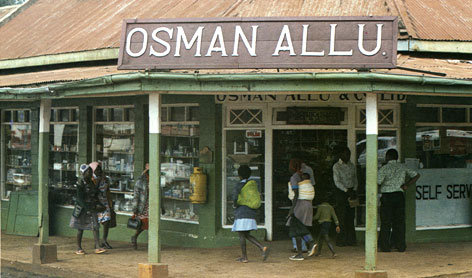
One of the oldest shops of Nyeri who sold nearly everything (courtesy 'The Kenya Magic')
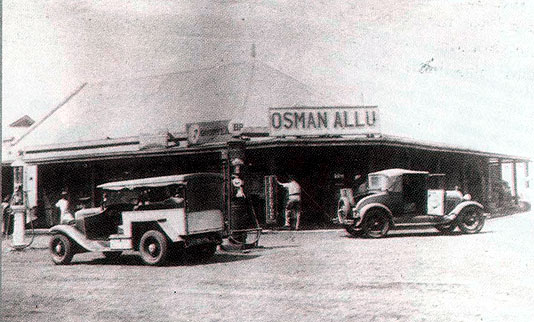
Osman Allu Shop during the thirtees (courtesy We came in Dhows)
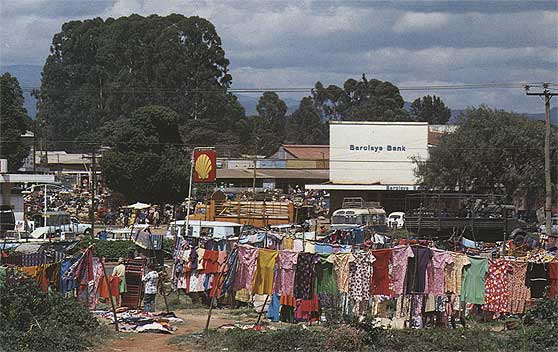
Shopping centre Karatina (near Nyeri)This name is derived from the word QUARANTINE - the cattle owned by the local population was held in an area - quarantined - before they were slaughtered at the abbatoirs...(courtesy 'The Kenya Magic')
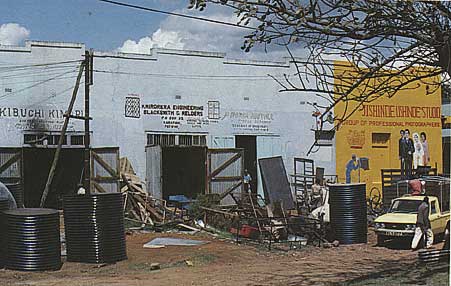
Workshops in Karatina (courtesy 'The Kenya Magic')
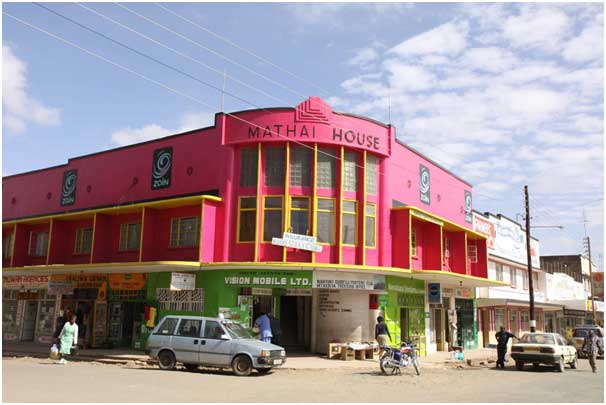
Mathai building in Nyeri (sent by Tahir Mirza)
Soroti
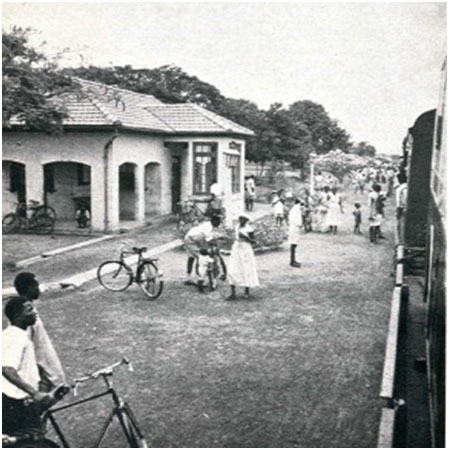
Soroti Railway Station 1956.A bustling and important railway cargo terminus for hauling of exports from Uganda to Mombasa Port. (sent by Tahir Mirza)
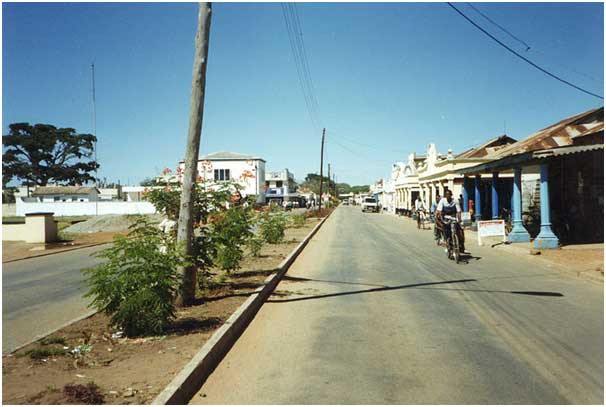
Soroti Town - Recent 2012
Tabora
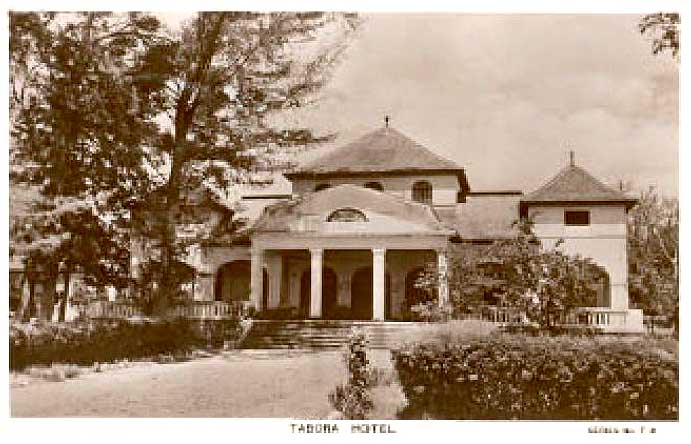
Tabora Hotel 1950/60's (sent by Tahir Mirza)
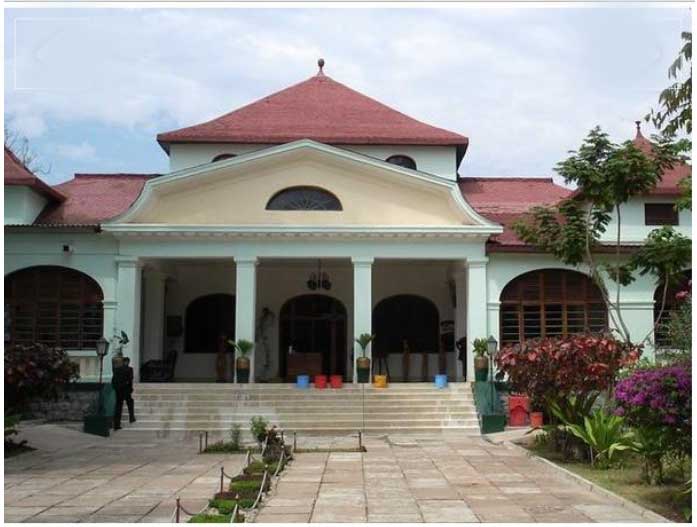
Tabora Hotel presently - as elegent as before - thanks to the Tanzania Govt. (sent by Tahir Mirza)
Unlike the Ripon Falls hotel in Jinja, It is so nice and re-assuring to know an old heritage has been maintained so beautifully.
I am not sure if the Germans built this magnificent piece of architecture, but the present Management have done extremely well to look after it. It is a three star hotel and the rooms do not have airconditioning. Well worth a visit to Tabora just to re-live old time nostalgia.
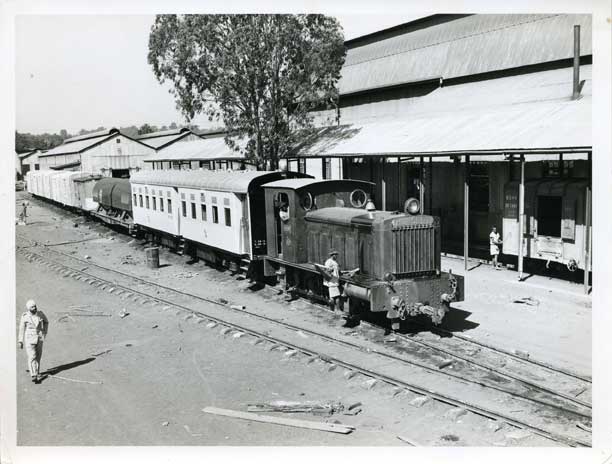
Loco shed - Tabora
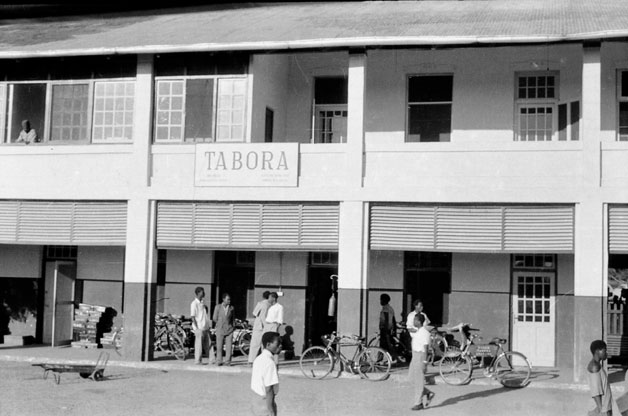
Tabora Station around 1950's (sent by Rajni Shah)
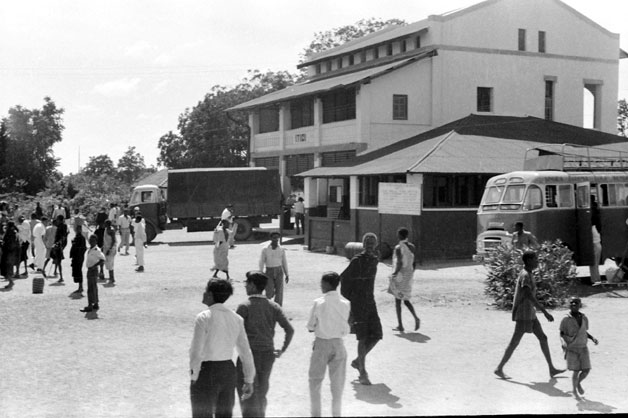
Outside Tabora Station 50's (sent by Rajni Shah)
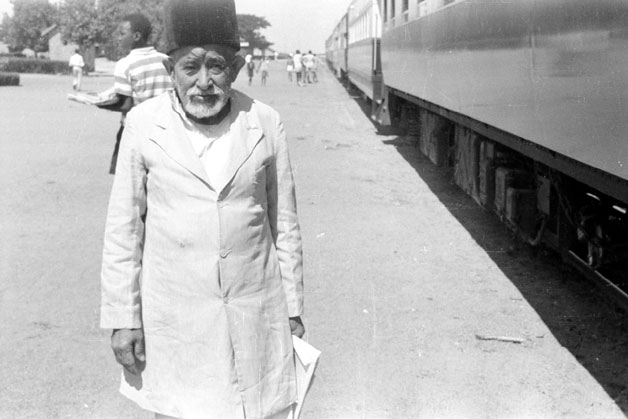
An old Asian pioneer near train station Tabora (sent by Rajni Shah)
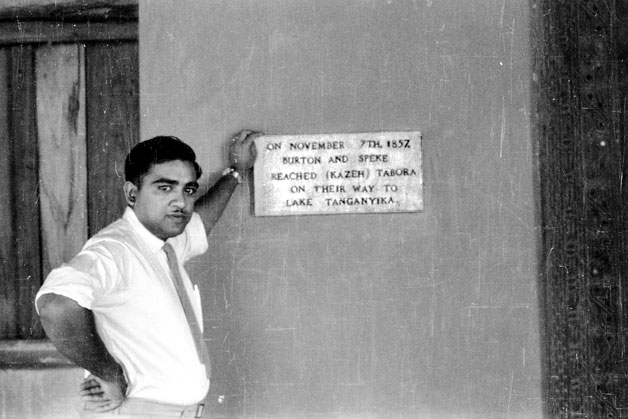
Rajni Shah's friend Baldev Raj Bij in Tabora 1950's (sent by Rajni Shah)
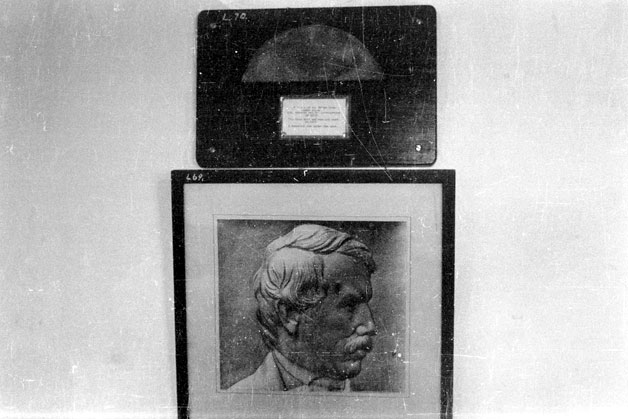
Plaque of Sir David Livingstone (sent by Rajni Shah)
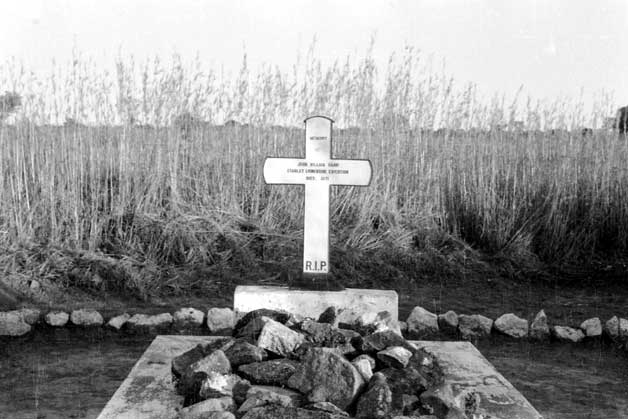
Grave of Sir David in Tabora (sent by Rajni Shah)
Tanga
See Tanga through the lens of Tahir Mirza..Click here

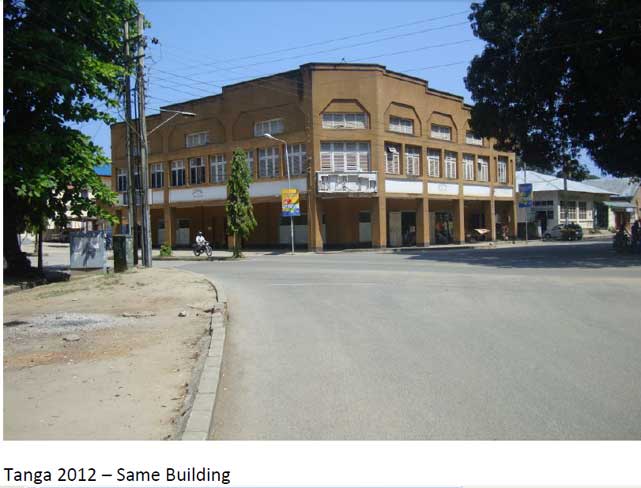
Thika
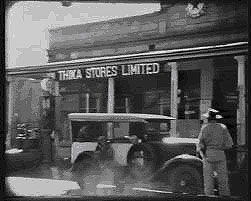
(sent by Narendra Shah)
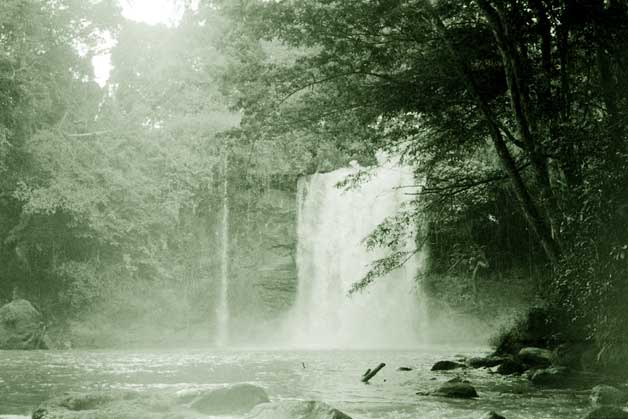
Thika Falls 1960 (sent by Rajni Shah)
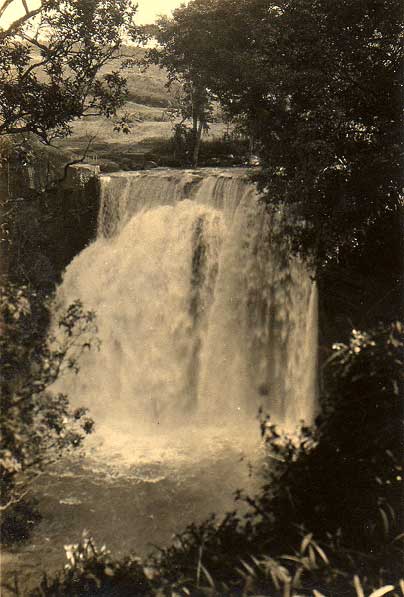
Thika Falls - a picnic spot for Kenyans (sent by Robin Grayson)
Thomson's Falls
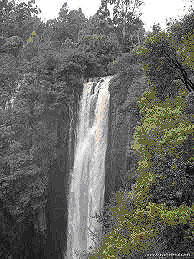
Thomson's Falls (sent by Narendra Shah)
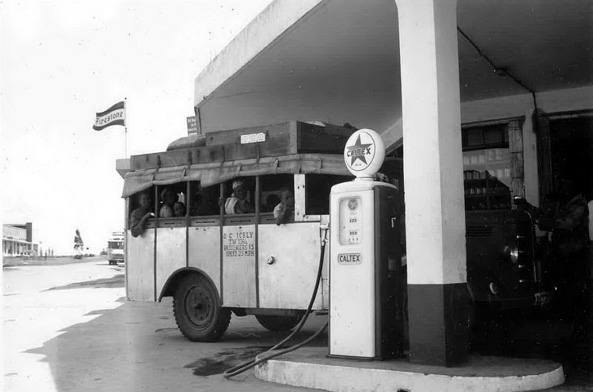
A taxi on a petrol station during the 50's at a Thomson Falls's Pump (sent by Tahir Mirza)
Tororo
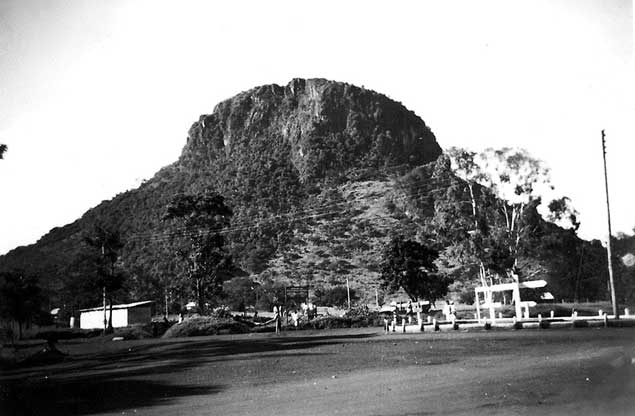
Tororo town was on the border of Kenya and Uganda on the way to Jinja and Kampala from Kenya. The hill on the background was a significant landmark on arrival at Tororo (sent by Rajni Shah) 1954